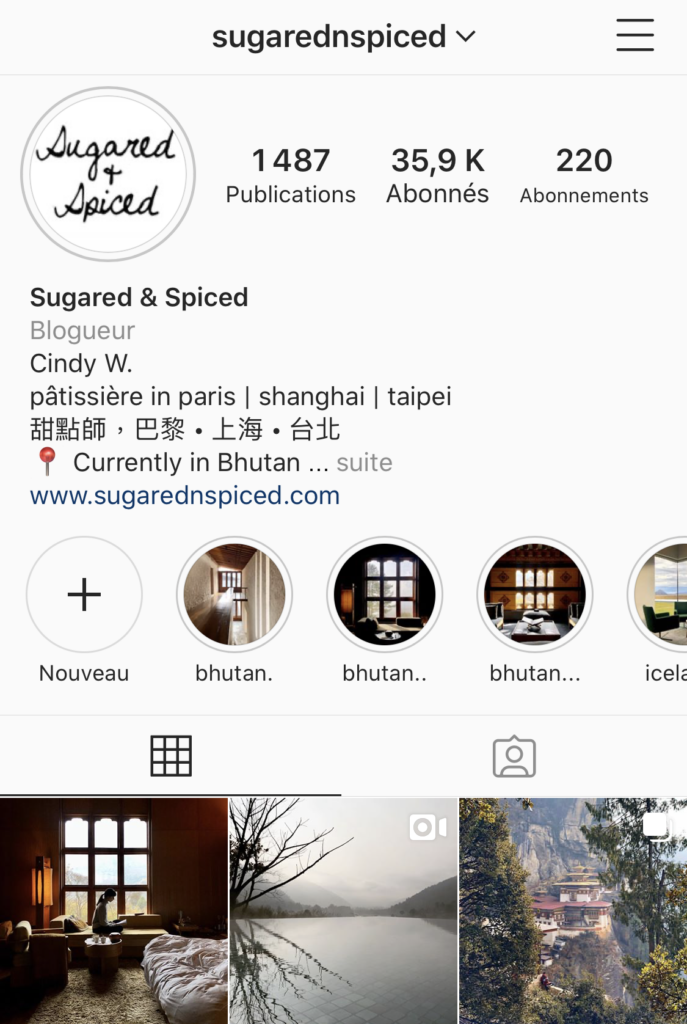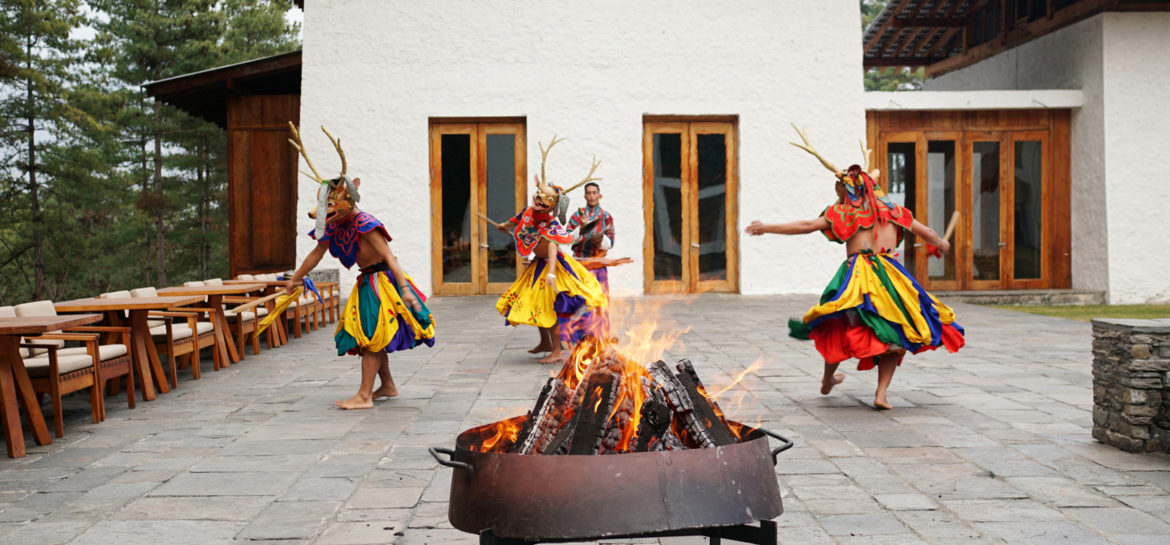
Prelude
Prior to my trip to Bhutan, I had certain imaginations about this mystic land, weaved together from scraps of information gathered here and there – “a spiritual mountain kingdom where tranquility reigns”, “the first nation to measure its success not by its economy but by the happiness of its people”, “the last Shangri-La”…
在踏足不丹之前,我對這個神秘的王國有著各種綺麗想象 – “與世無爭的淨土”、“世界上最幸福的國度”、“人間最後一片香格里拉”…
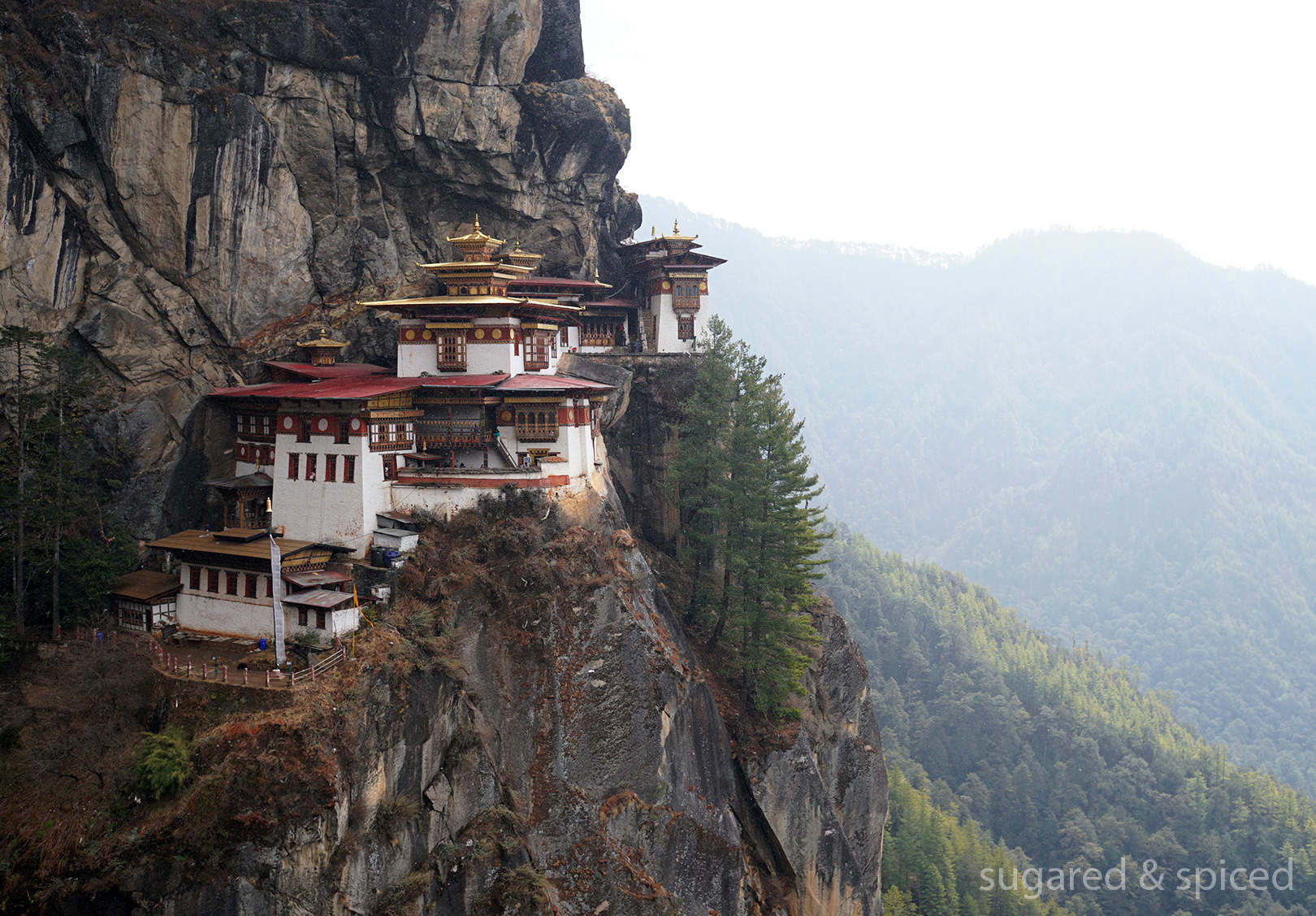
I had a feeling that I would enjoy Bhutan, but I didn’t expect to fall so hard for it. During the 8 days of my journey, I slowly and surely fell in love with this country, for the pristine beauty of its nature, for the unique layers of its culture, for the pure good-hearts of its people. I realized that being here, I can let my guard down, I can be kind. Bhutan was teaching me things I had lost track of in my daily life.
將不丹放在心裡已好多年,終於在上個月成行。經過八天的旅程,我迷上這裡未經雕琢的原始風景,色彩鮮豔的文化信仰,和當地人民純樸善良的笑容。不丹讓我發現,自己可以放下心防,可以完全真誠。這個美麗的地方不疾不徐地,重新教導我許多在日常生活中不小心被遺忘的重要事情。
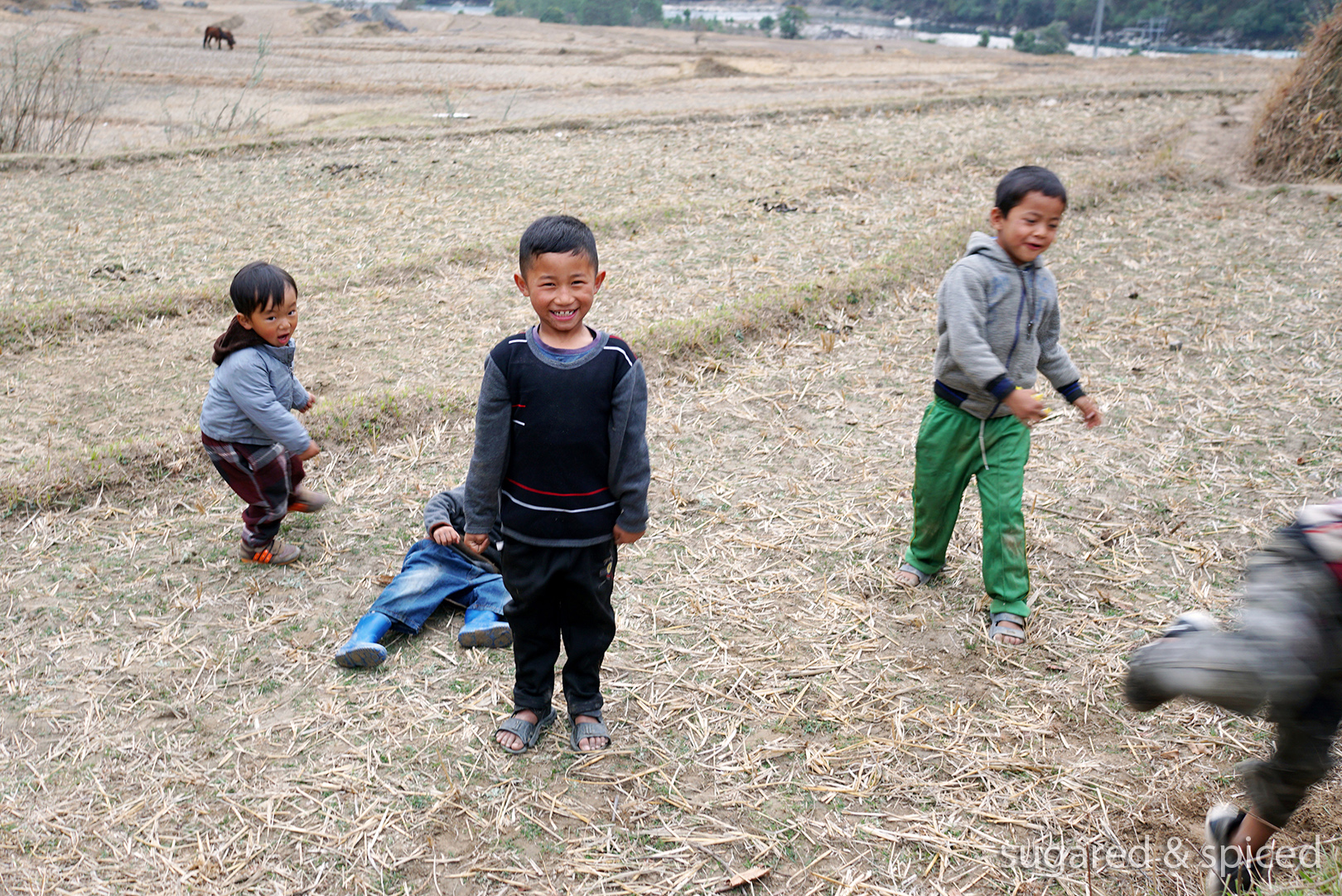
There’s so much I’d like to share with you. Let’s start with day 1.
有太多感動想要細細說給你聽。要不,就從第一日開始吧。
Day 1, Thimphu
Bhutan is not an easy country to reach, as its only international airport is situated in a high, narrow valley nestled among the Himalayas, surrounded by sharp peaks of up to 5,500m. This makes it one of the most harrowing landings in the world, and only a select number of pilots (17, I heard) from Bhutan’s own Drukair and Bhutan Airlines are trained to complete.
Other than the sharp turns and 45-degree tilts prior to landing, the flight to Bhutan is exciting for another reason – it offers a phenomenal view of the Himalayas, its majestic range sitting tall above the clouds:
不丹讓人覺得遙不可及的原因有很多,其中之一,是它唯一的國際機場位於喜馬拉雅山谷之間,四周被高至5500米的山陵環繞。全球只有極少數的飛行員(聽說只有17位)受過相應的訓練,具備在這里起降的資格。因為抵達是如此困難,所以遺世獨立,清貧自在。
除了降落前數個45度傾斜急轉彎之外(聽起來可怕,但其實坐在飛機上不會有太多感覺),飛往不丹的航班還有一點非常特殊 – 透過機窗,可以看到高聳在雲端之上的喜馬拉雅山脈。那壯觀的景色看過一次,就絕不會忘懷:
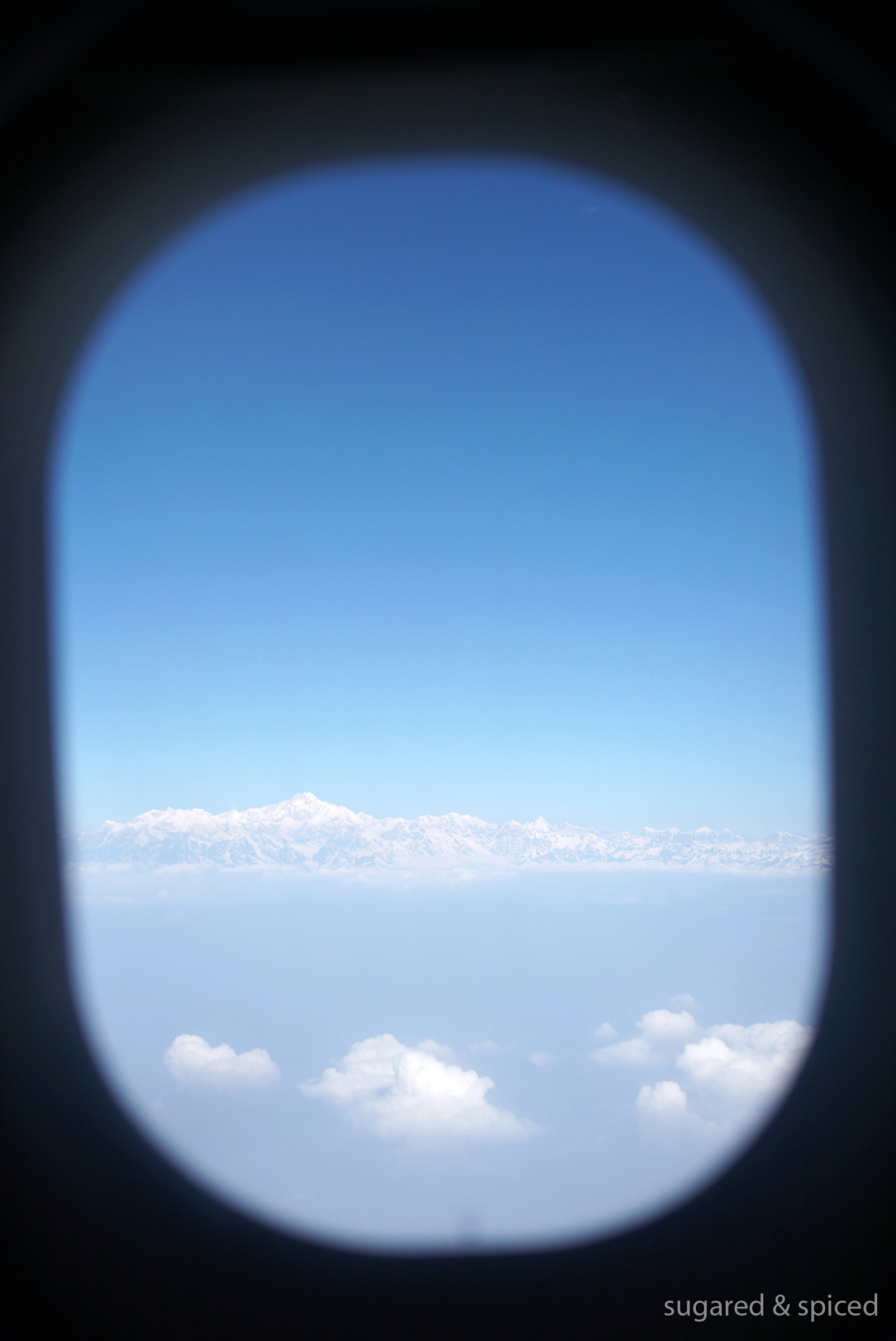
Paro Airport, amidst mountains and clouds. After 12 hours of overnight plane rides and transits through Bangkok and Kolkata, finally, we’ve arrived in Bhutan.
我們從曼谷轉機、經停加爾各達,前後12小時的飛行和等待,終於抵達不丹。降落前從機上俯瞰,觸目所及皆是山林河谷,沒有任何西式或現代建築,與唯一稀疏錯落其中的傳統民居,交織成一股說不出的沈靜與美麗。
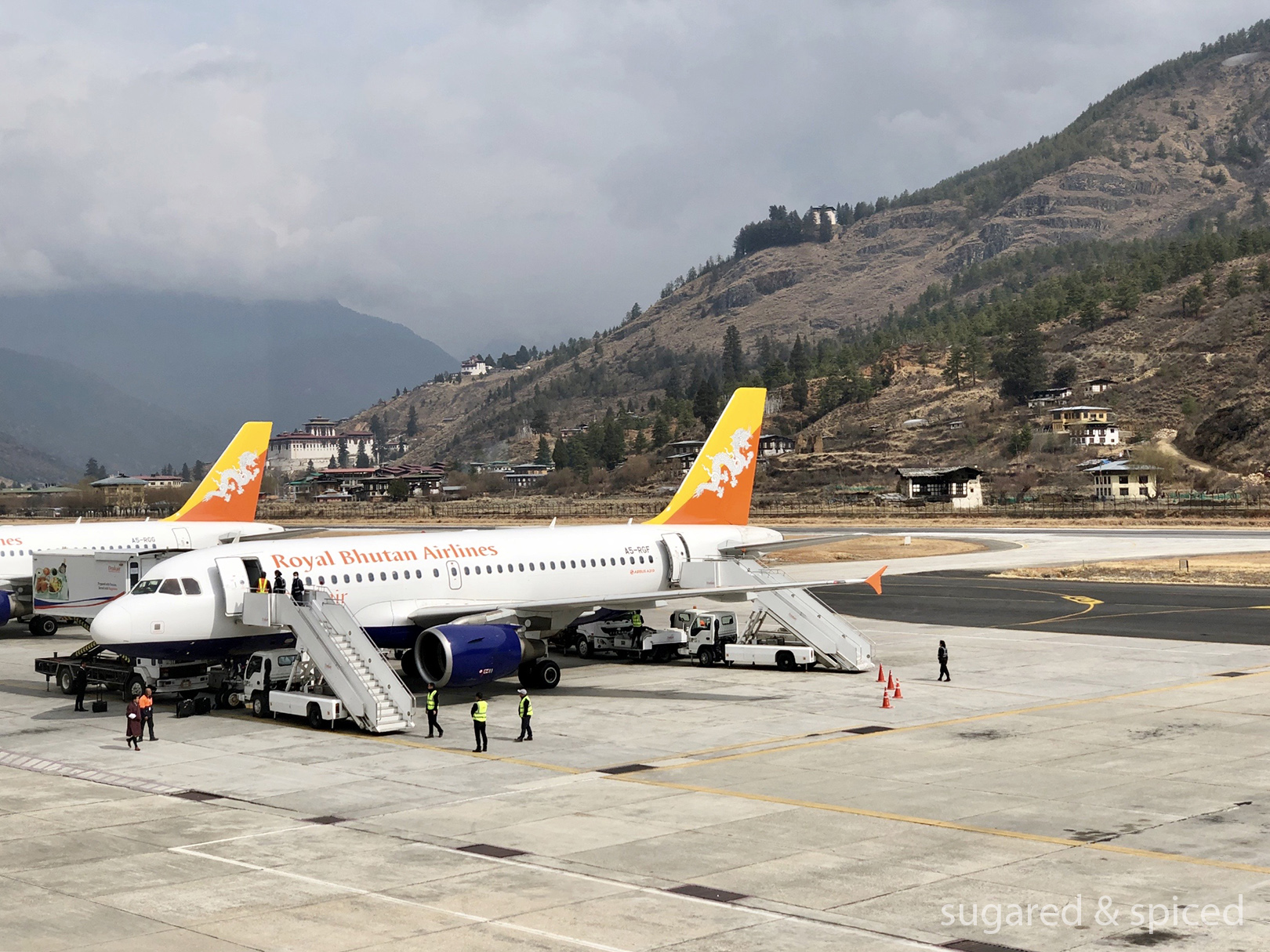
To protect its beautiful yet fragile natural landscape and precious culture heritage, the Bhutanese government forbids foreign travelers from roaming freely in its country. One must go through a travel agency, or in our case, an established hotel, to obtain visa, arrange itineraries, hire a certified guide, etc. For our first journey into this remote kingdom, we had chosen Amankora to lead the way.
為了保護國家的自然環境以及文化,不丹政府未開放外國人自由行。游客必須透過旅行社申請簽證,並支付每人每天的最低消費(淡季:200美金/天,旺季:250美金/天)。乍看之下似乎不便宜,但這個費用包含了基本飲食、住宿、景點入場費,導游及司機費用,一次性付款之後,在不丹旅行期間無需再掏出錢包(除了購物和給小費之外),是個非常省心的旅行方式。也有個別酒店,比如我們這次入住的 Amankora 安縵喀拉,可以直接幫客人申請簽證、安排行程,無需另外聯繫旅行社。
註:最低消費包含一般酒店,高級酒店費用另加。
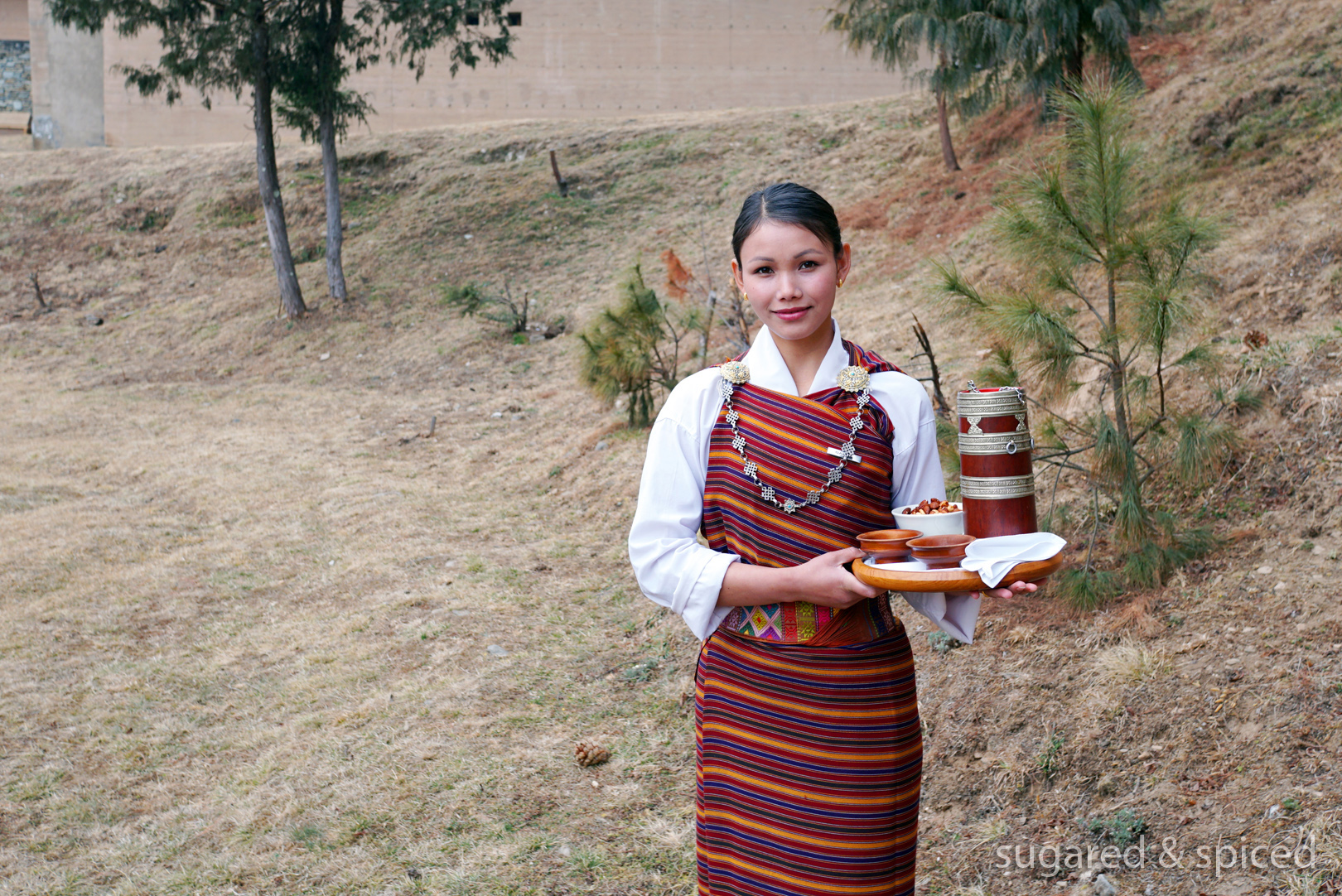
I’ve long had a penchant for Aman’s exquisite yet understated designs that blend into natural surroundings. Amongst all the Aman properties, Amankora is especially unique because it doesn’t just have one, but five lodges spread across Bhutan:
- Paro (where the international airport is located)
- Thimphu (the capital)
- Punakha (a blissfully warm valley at Bhutan’s lowest elevation)
- Gangtey (a valley at 3000m surrounded by mountain peaks)
- Bumthang (a picturesque valley in Eastern Bhutan)
As much as I had wanted to experience all five lodges, our trip was too short to include Bumthang, so we followed the short loop of Thimphu – Gangtey – Punakha – Paro.
之前已分享過幾次我對安縵的喜愛,而 Amankora 更是所有安縵酒店中極為特殊的一家 – 它並不是 “一間” 旅館,而是由五間座落於不丹各處的 lodge 所組成的:
- Paro(國際機場所在地)
- Thimphu(首都)
- Punakha(不丹氣候最溫暖的地區)
- Gangtey(海拔三千多米的秘境)
- Bumthang(有小瑞士之稱的美麗山谷)
除了 Bumthang 因為路途太遠這次沒能安排之外,我們依著其他四間 lodge 的所在位置,Thimphu – Gangtey – Punakha – Paro,周游了一圈。
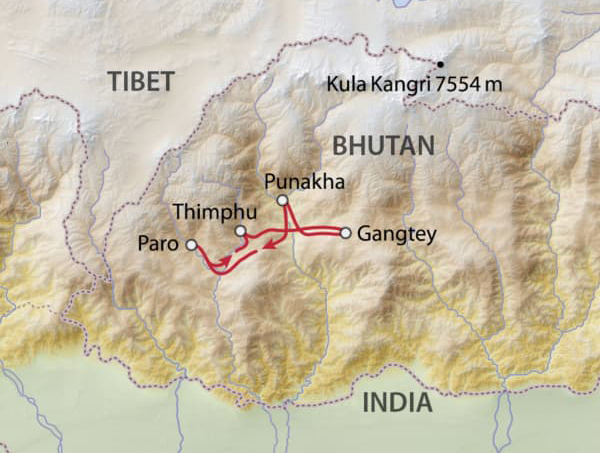
Essentially, a journey with Amankora involves driving from valley to valley, from one elegant sanctuary to the next – I could think of no better ways to discover Bhutan.
我們在 Amankora 訂下的不是單純的住宿,而是一整個 “journey” – 酒店根據我們的喜好和逗留時間制定行程,在不丹境內四處穿梭,全程跟隨的導游、私人休旅車、司機、每日飲食都一手包辦。
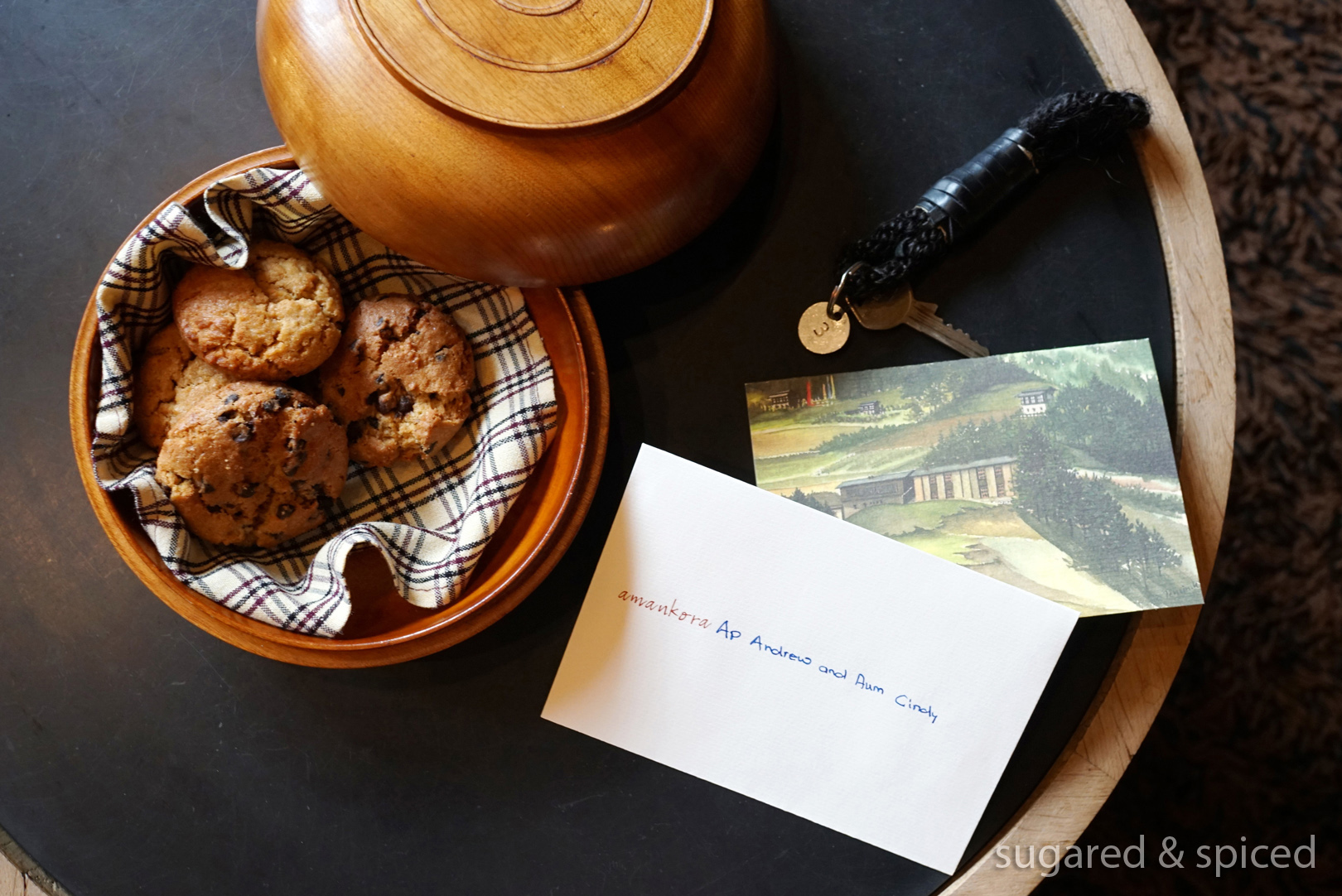
When Dawa and Kinley – our guide and driver – scooped us up from Paro Airport with their warm smiles, I knew I was in good hands, and felt beyond reassured that they were to remain by our side for the entire journey. The car had everything we needed: snacks, water, soft cushions to make the ride more comfortable, and this gorgeously textured pouch containing sunscreen, lip balm, motion sickness remedy…etc. Oh, and wifi, which I thought was so essential, but didn’t end up using much throughout the trip because there were plenty of other things to pay attention to.
這場 journey,從踏出機場的那一步就開始。初抵不丹難免有些緊張,不過一看到前來迎接我們的導游 Dawa 和司機 Kinley 兩人的溫暖笑容,忐忑的情緒瞬間消散。能有他們一路陪伴,令人感到相當安心。車里已貼心地準備好一切所需 – 零食、水、舒服的靠墊、用當地紡織布料做成,裝了防曬霜、護唇膏、香薰(解暈車用)的精美收納包。還有本來以為非常重要的 wifi,結果根本沒怎麼用到,因為我們的註意力始終被更精彩的事物吸引著。
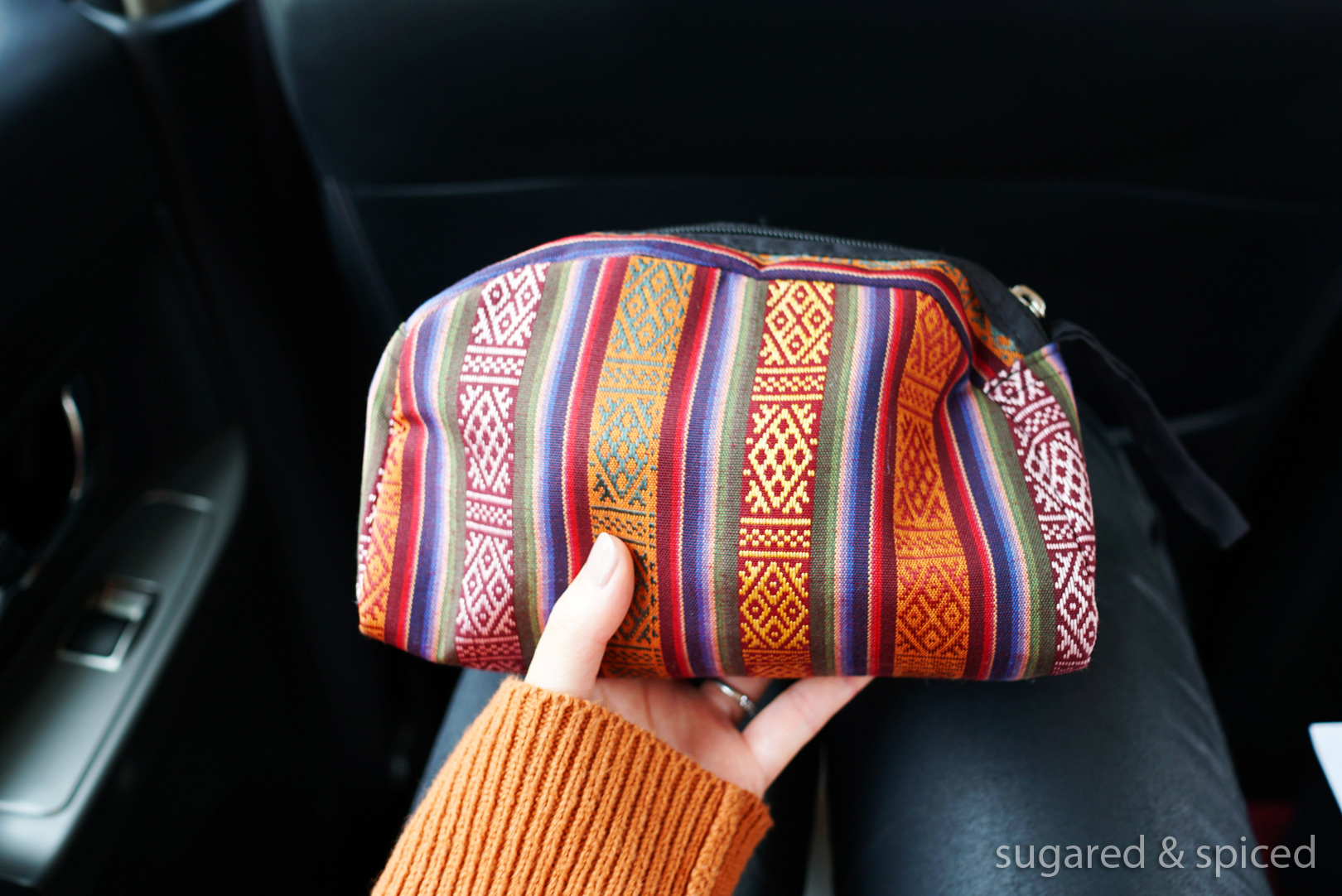
Here’s the dependable ride that carried us up and down mountainous terrain through the next 8 days.
這是載著我們跑了八天山路的吉普車。
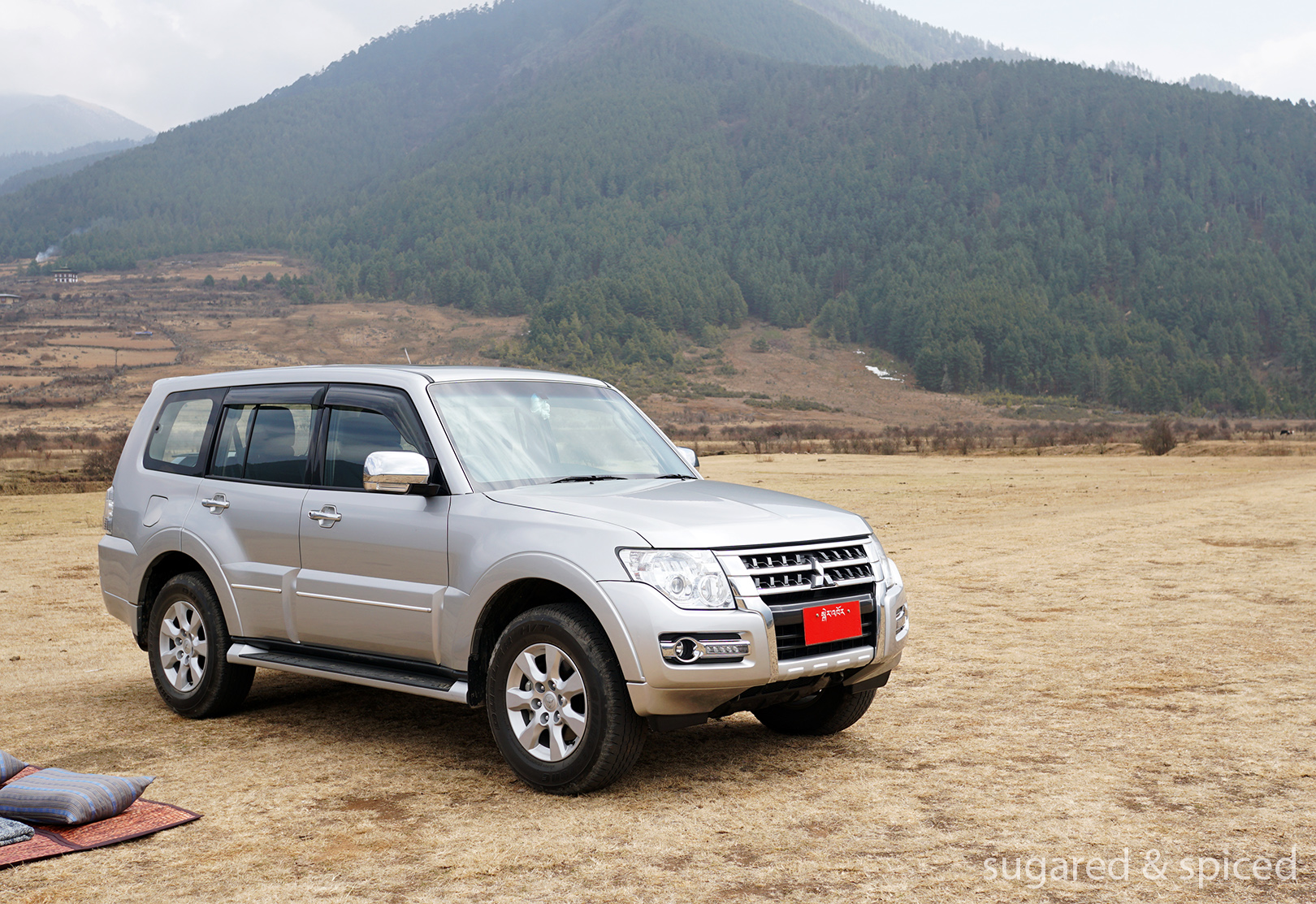
From the airport to Thimphu, it was a 1.5-hour drive through forested mountains dotted with monasteries and temples. Once we reached the capital, it happened kind of like magic – one moment we were still on a busy street, then, a few turns here and there up a hill, we were immersed in a tranquil forest. There was no sign at the entrance, but we had indeed arrived at the first lodge of our journey.
“Welcome to Amankora.”
第一站是首都 Thimphu。從機場出發,在山路里穿梭一個半小時後,進入市區。說來神奇,明明前一秒還在熱鬧的街道上,就這麼拐了幾個彎,瞬間進入一整片蓊鬱山林中。雖然沒有任何門牌標示,我們的確已經抵達 Amankora。
以前去過的每一家安縵,讓我驚艷的第一件事都是酒店選址,Amankora 也不例外。安縵的創始人與不丹皇室已有幾十年的交情,因此酒店的地理位置都相當獨特,比如 Thimphu lodge 就在皇太后住所的隔壁,而之後要去的 Punakha lodge 其中一棟老房子也是由皇家私宅改建而成。
“歡迎來到 Amankora。”
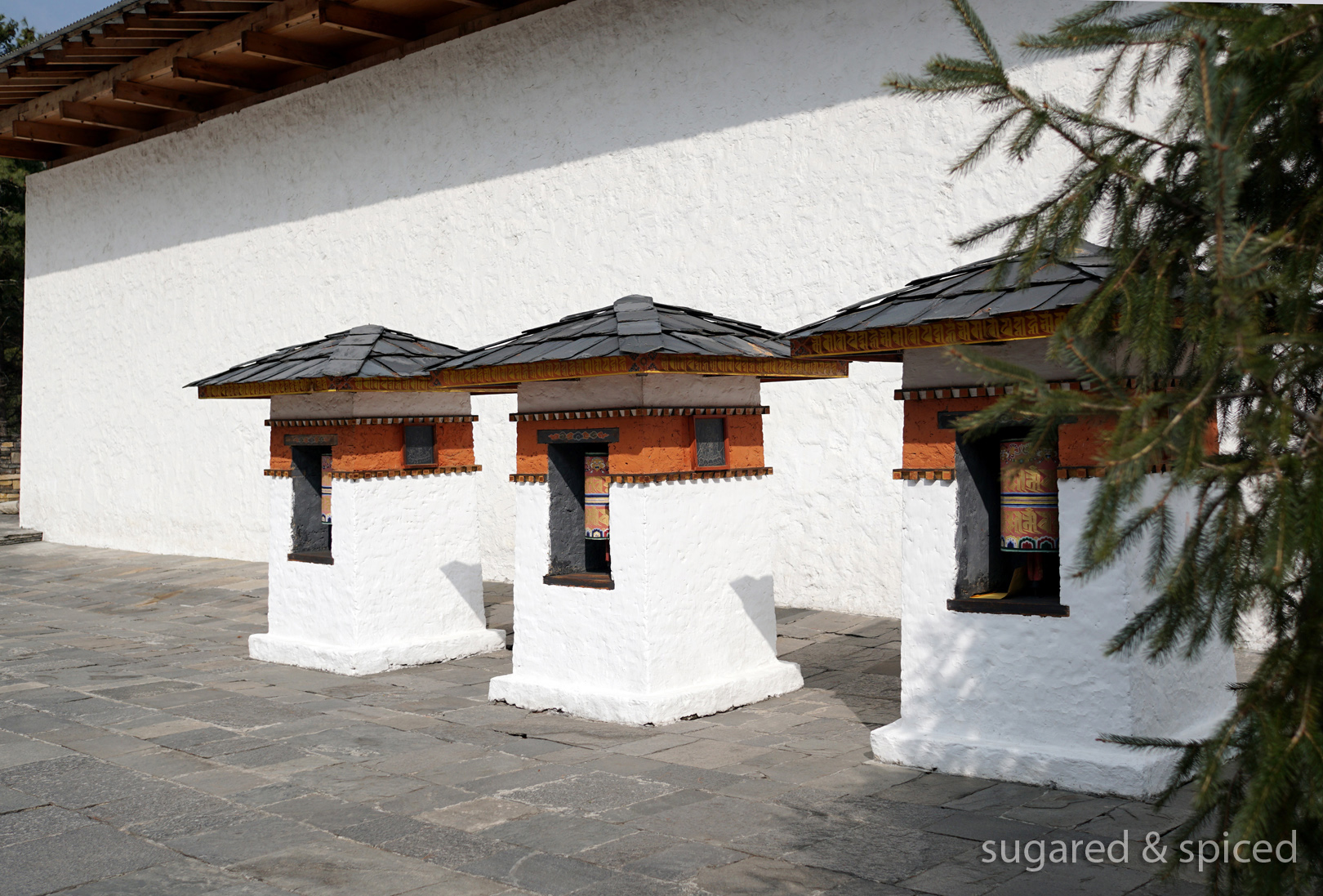
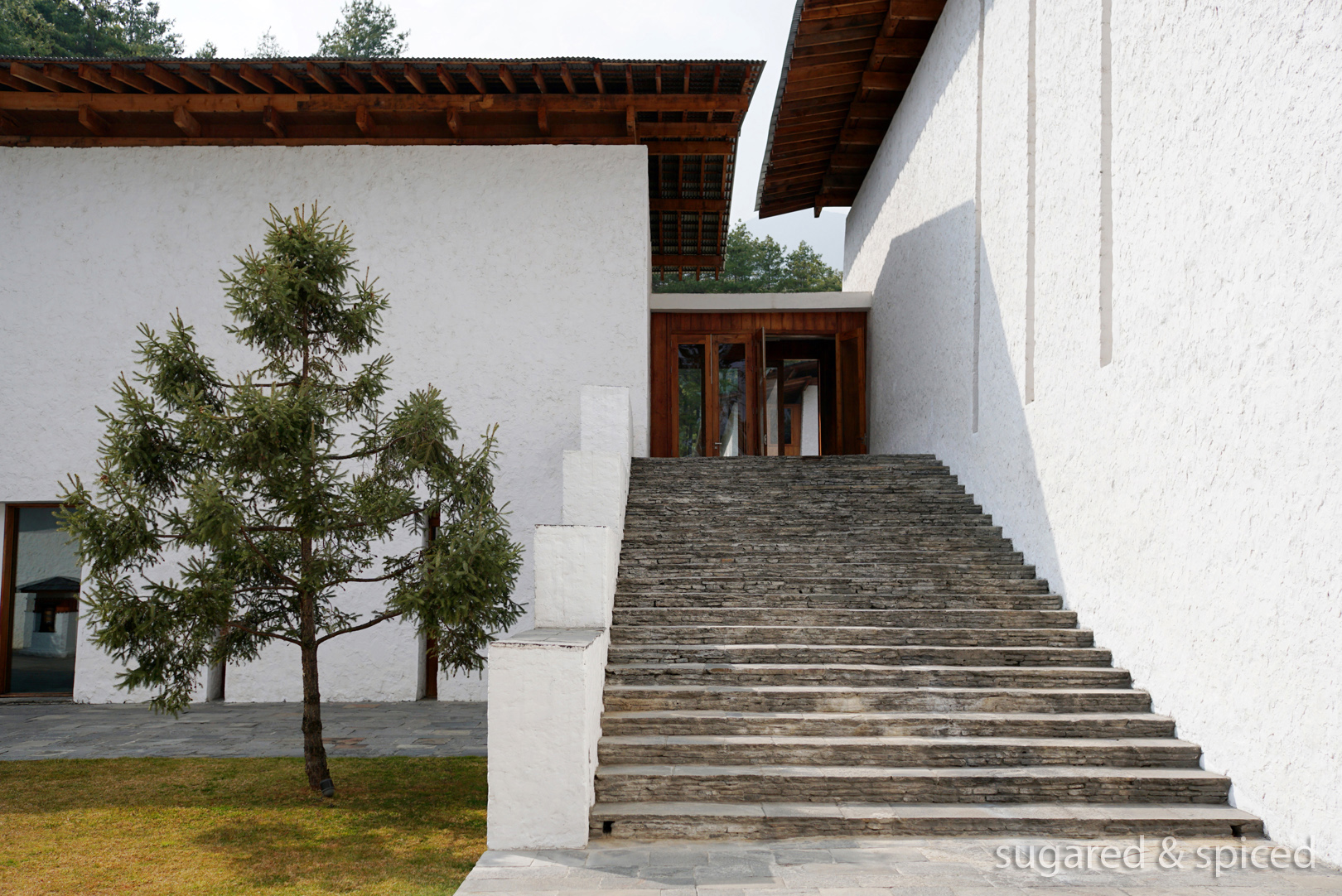
The 16-suite lodge was built in the style of a traditional dzong (fortress) – high white-washed stone structures with soaring ceilings and wood-panel windows.
Thimphu lodge 採用不丹傳統 “dzong” 宗堡設計風格,以沈穩的白色和木質色調為主。僅有十六間套房,客人不多,相當私密。
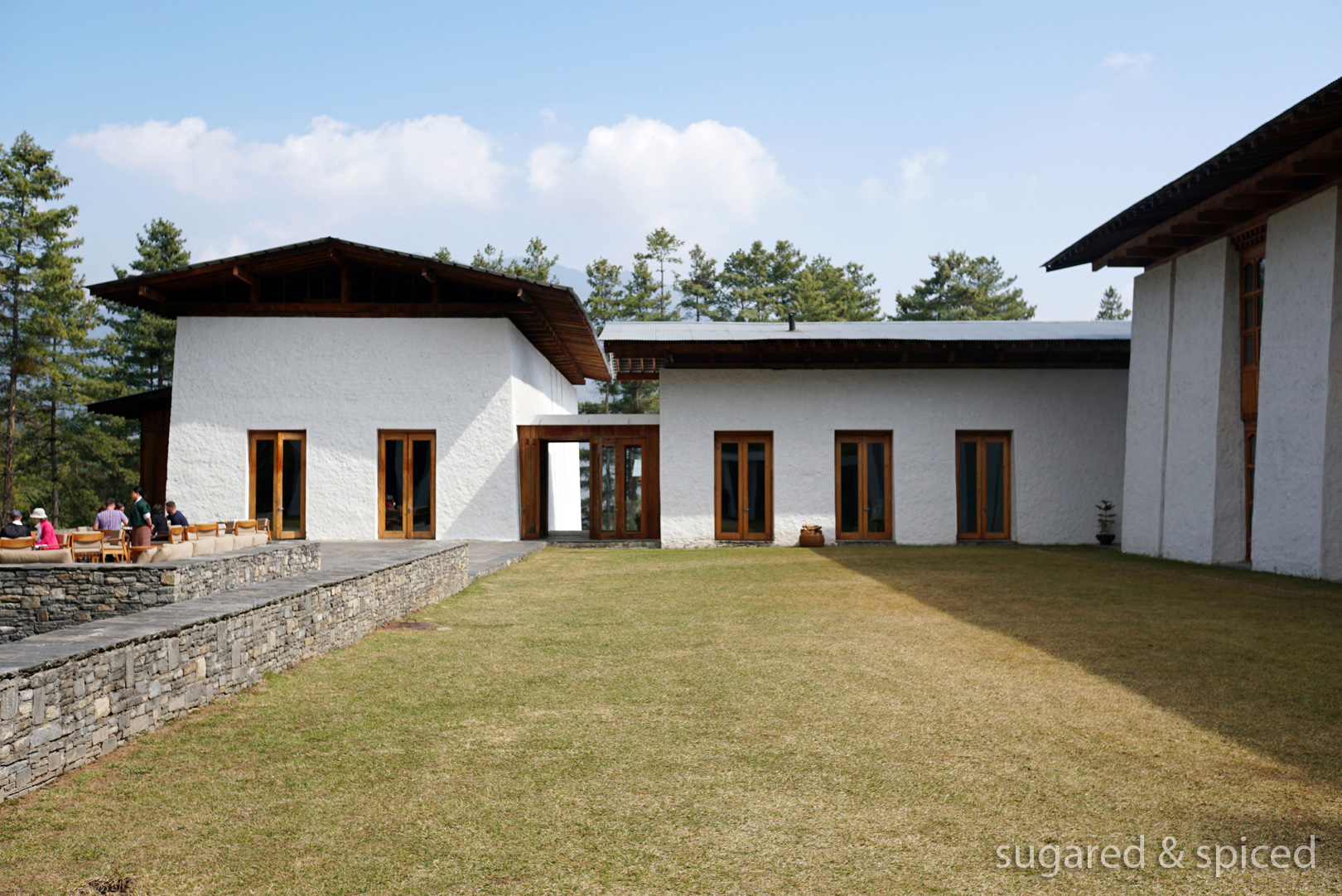
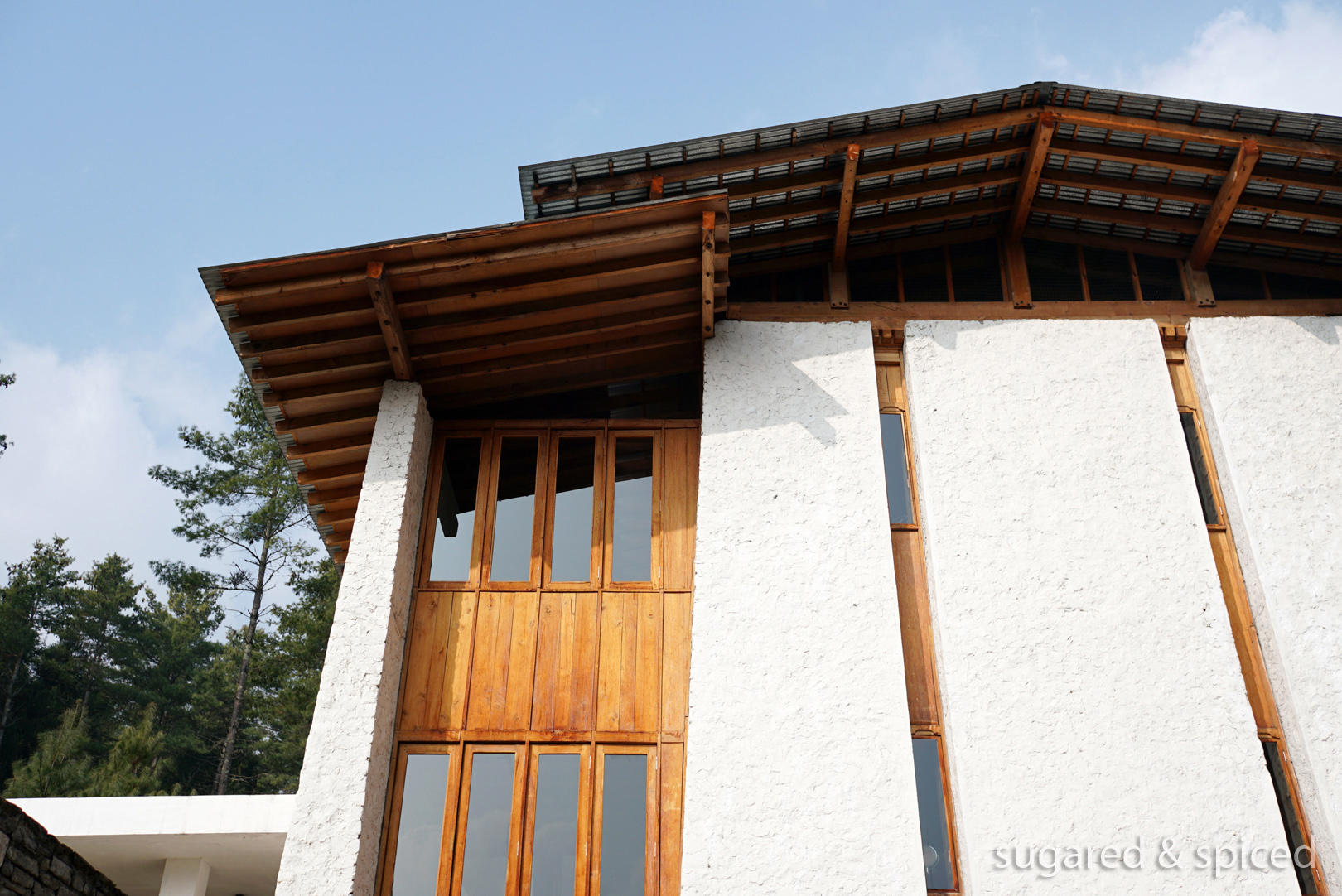
Through the windows, there were fragrant pine trees as far as the eyes could see.
透過窗戶,是一整林高大蒼勁的老松。
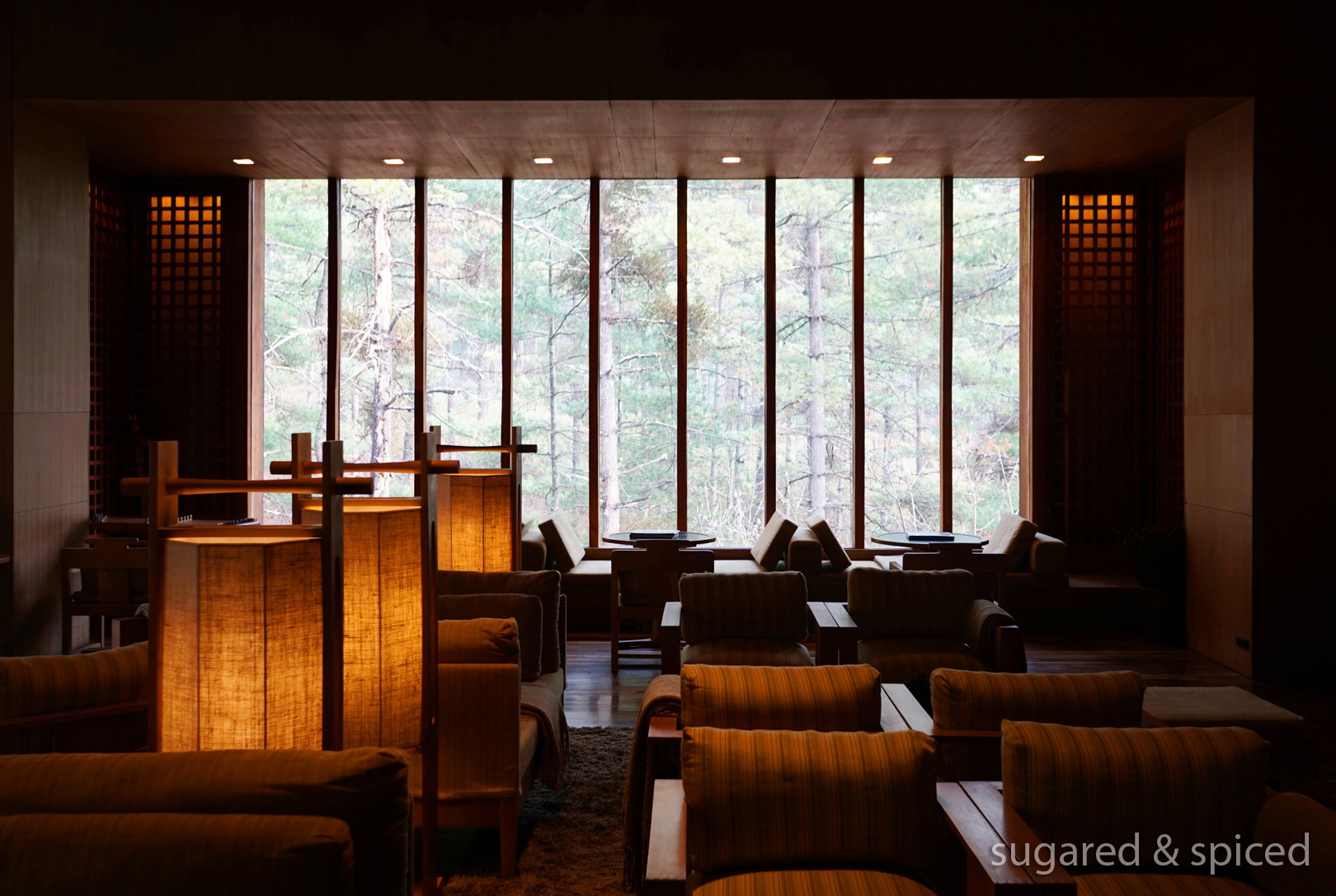
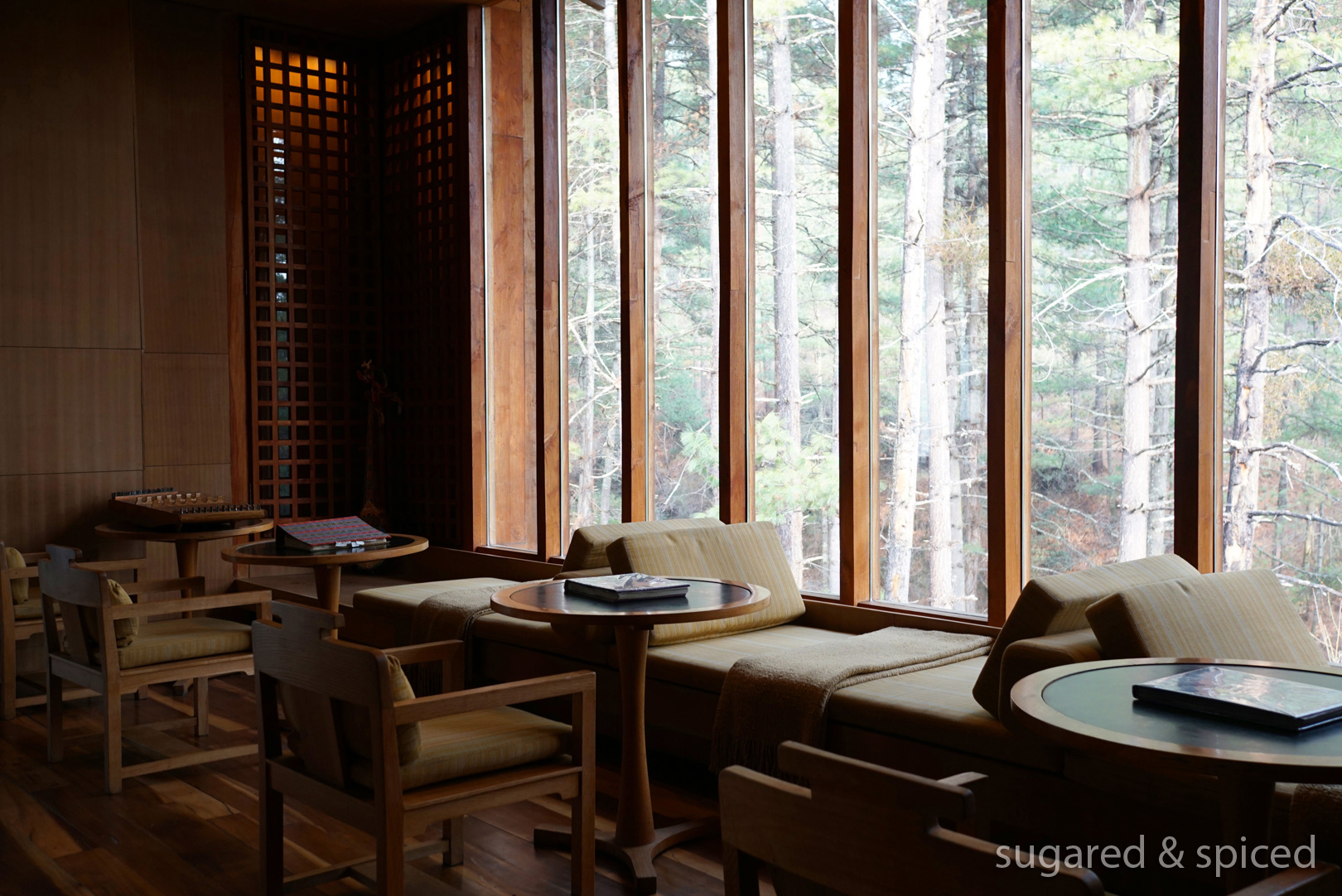
Upon arrival, khatas (welcome scarves) were draped around our necks, hot towels perfumed with lemongrass were placed in our hands, and cups of apple juice were readily poured as we sat down in the serene reception.
工作人員先為我們掛上白色的迎客圍巾 “khatas” ,遞上帶有檸檬草香氣的熱毛巾,再倒上兩杯熱騰騰的香料蘋果汁。
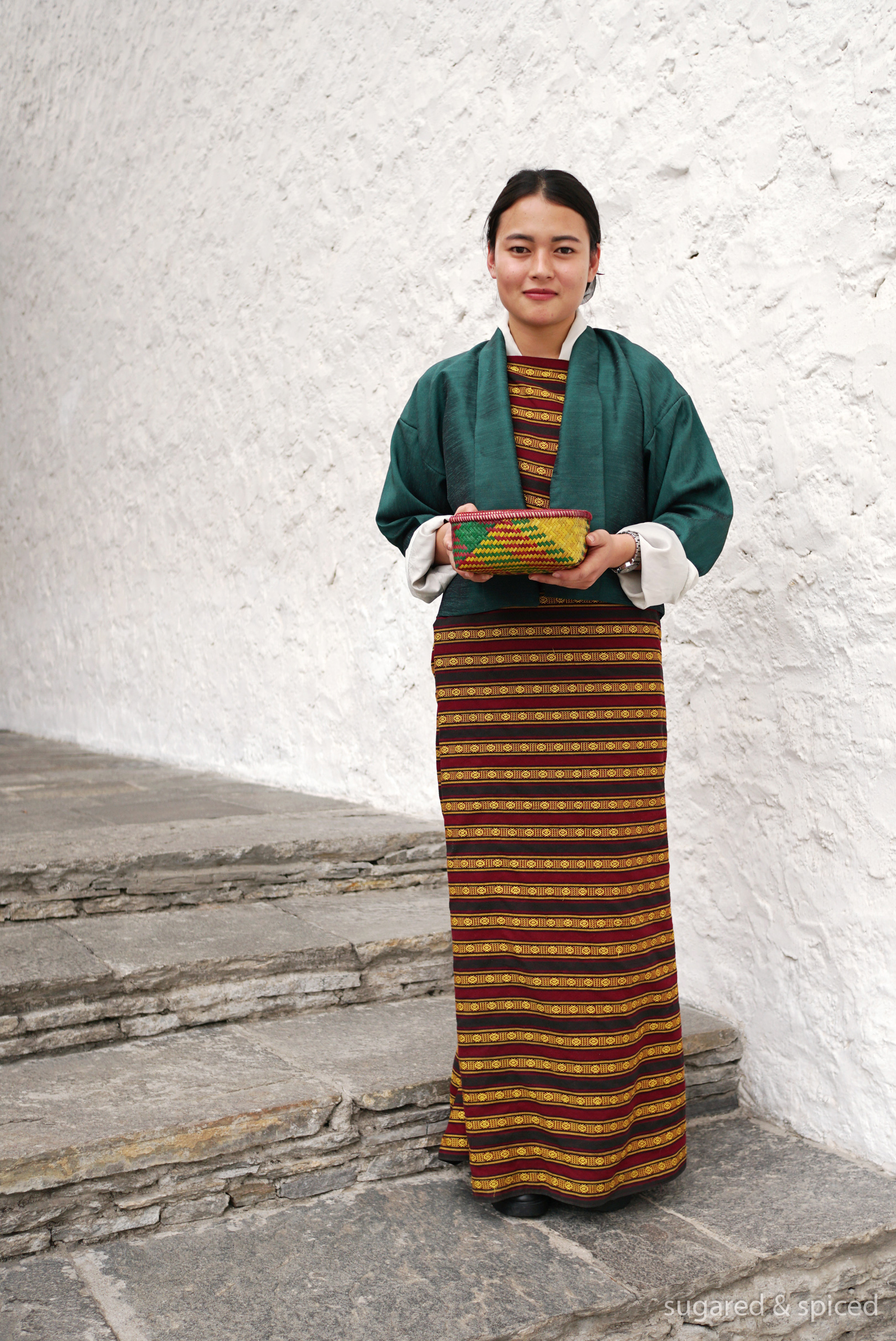
The juice was squeezed from local apples harvested in Bumthang, heated and flavored with cinnamon, cloves, and a drizzle of honey. The aroma was incredible, and the warmth soothing down the throat.
這蘋果汁,真美味。不丹中部山谷盛產蘋果,除了冷喝之外,也可熱飲,濃濃蘋果香裡透著馥鬱的肉桂香氣,微寒天氣里來上一杯,說不出的舒暢。
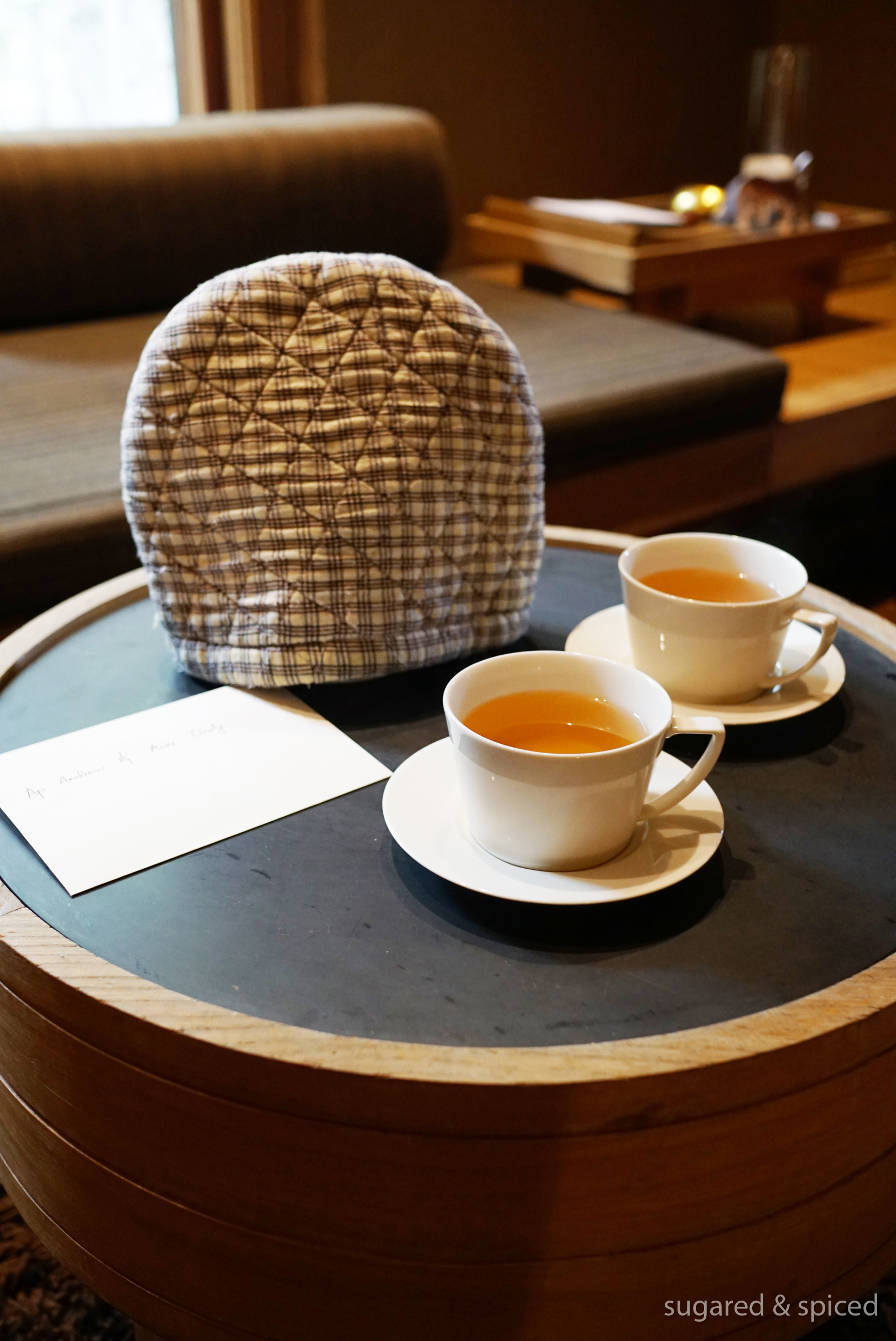
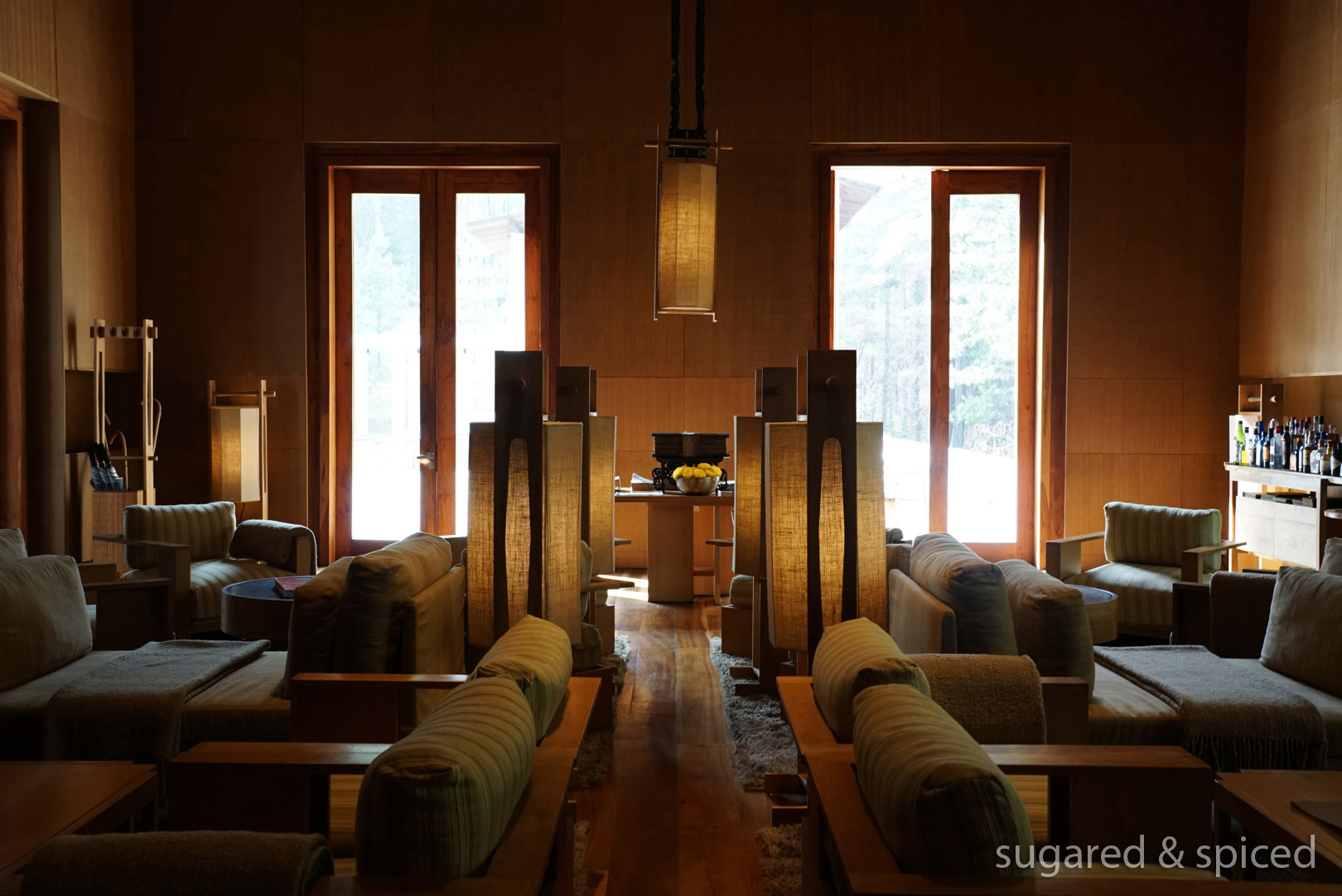
And then, into the suite. It’s a beautifully designed space, furnished with just the right elements: traditional wood-burning stove, banquette window-seats, wool blanket…but no TV, and rightly so. Though there are minor signs of wear and tear (do remember that Amankora opened back in 2004), we marveled at how everything had been maintained so well over the years, and how incredibly timeless the design is, that 16 years later, our breaths were still taken away the moment we stepped in.
客房設計也展現安縵一貫對當地文化的重視。木頭格狀長窗、鐵皮木頭暖爐等,皆取自不丹的傳統民居。房裡的各個細節 – 窗邊軟榻、毛毯、燭台…都在低調簡潔之中透著雍容典雅。Amankora 開幕十六年,狀態仍維持得如此良好,令人驚艷。
註:這里沒有電視,也不會有想看電視的慾望。
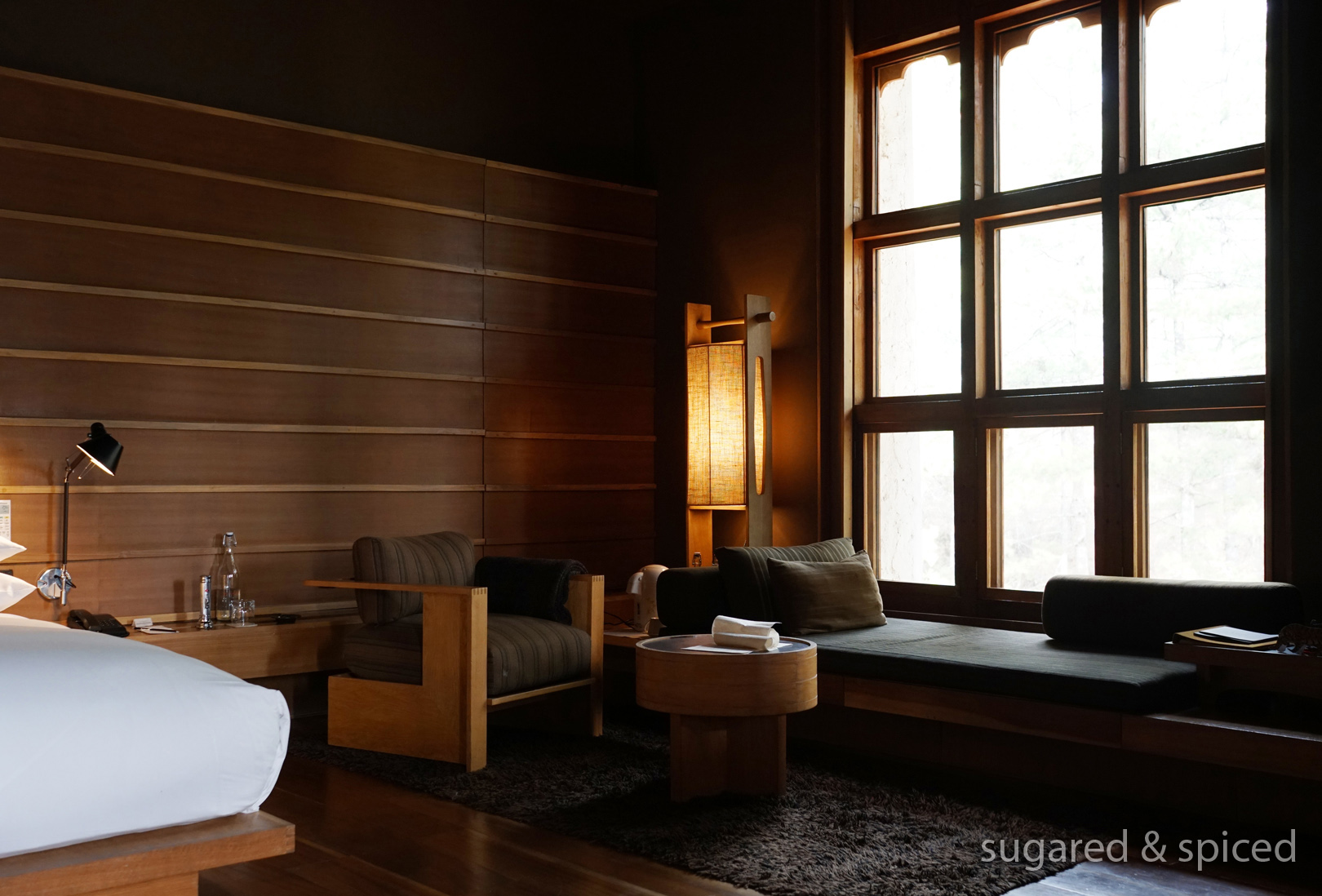
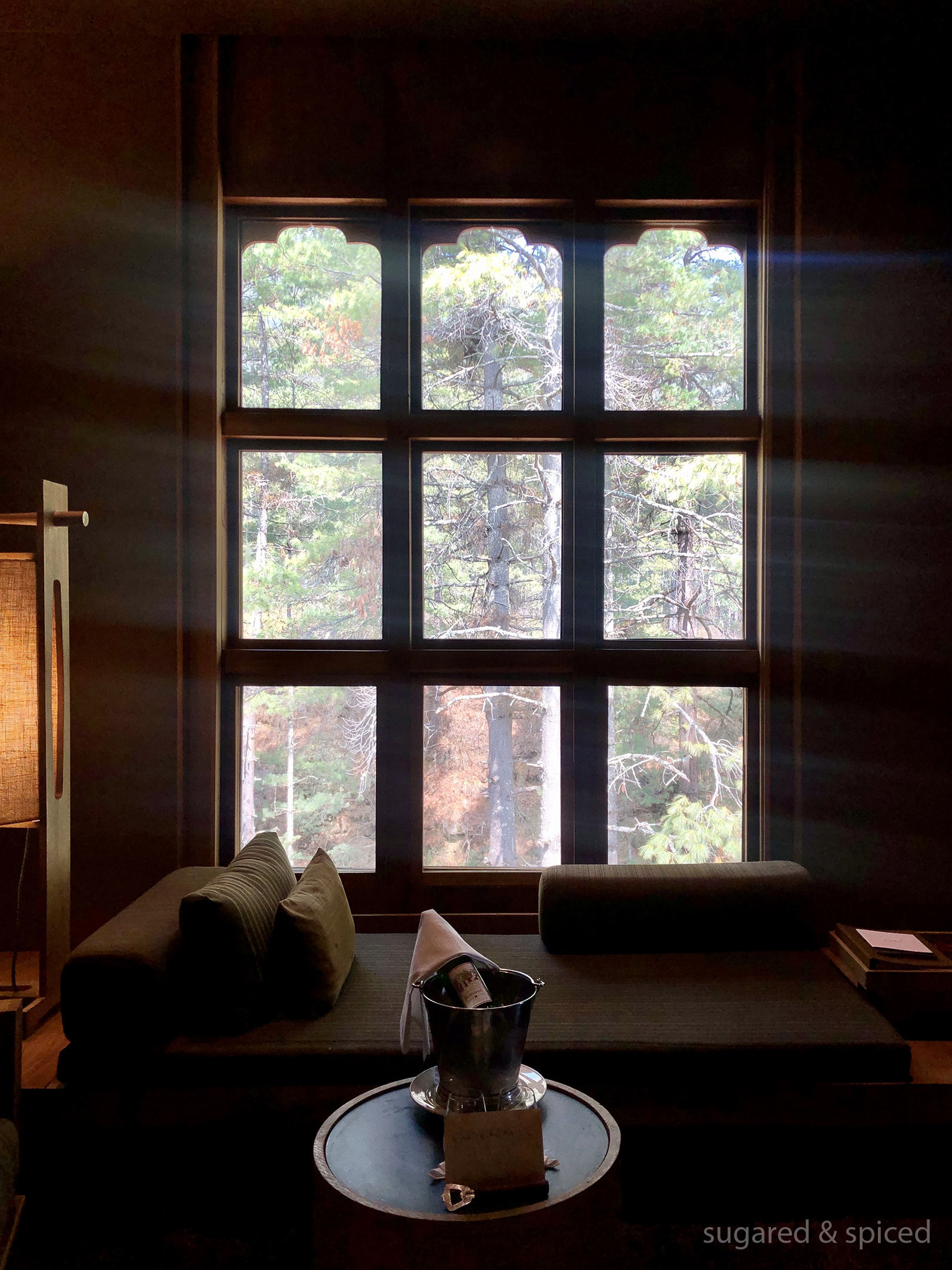
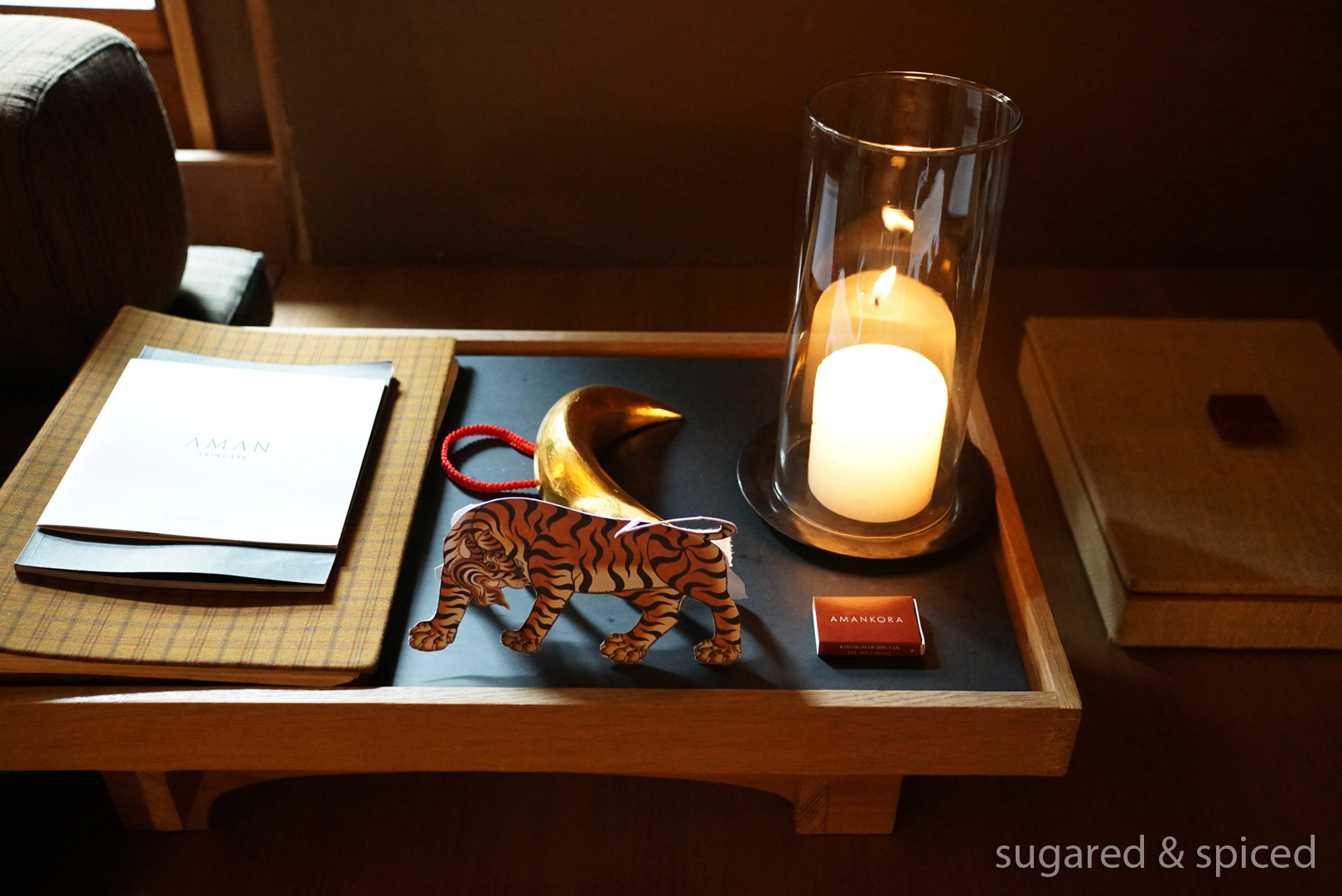
Very thoughtfully, a bowl of water was placed on top of the stove to give moisture, for Bhutan’s winter can be exceedingly dry (so do remember to bring your richest moisturizer).
火爐上貼心地放了一碗用來濕潤空氣的水(不丹的冬天非常乾燥,請務必帶上最滋潤的保養品)。
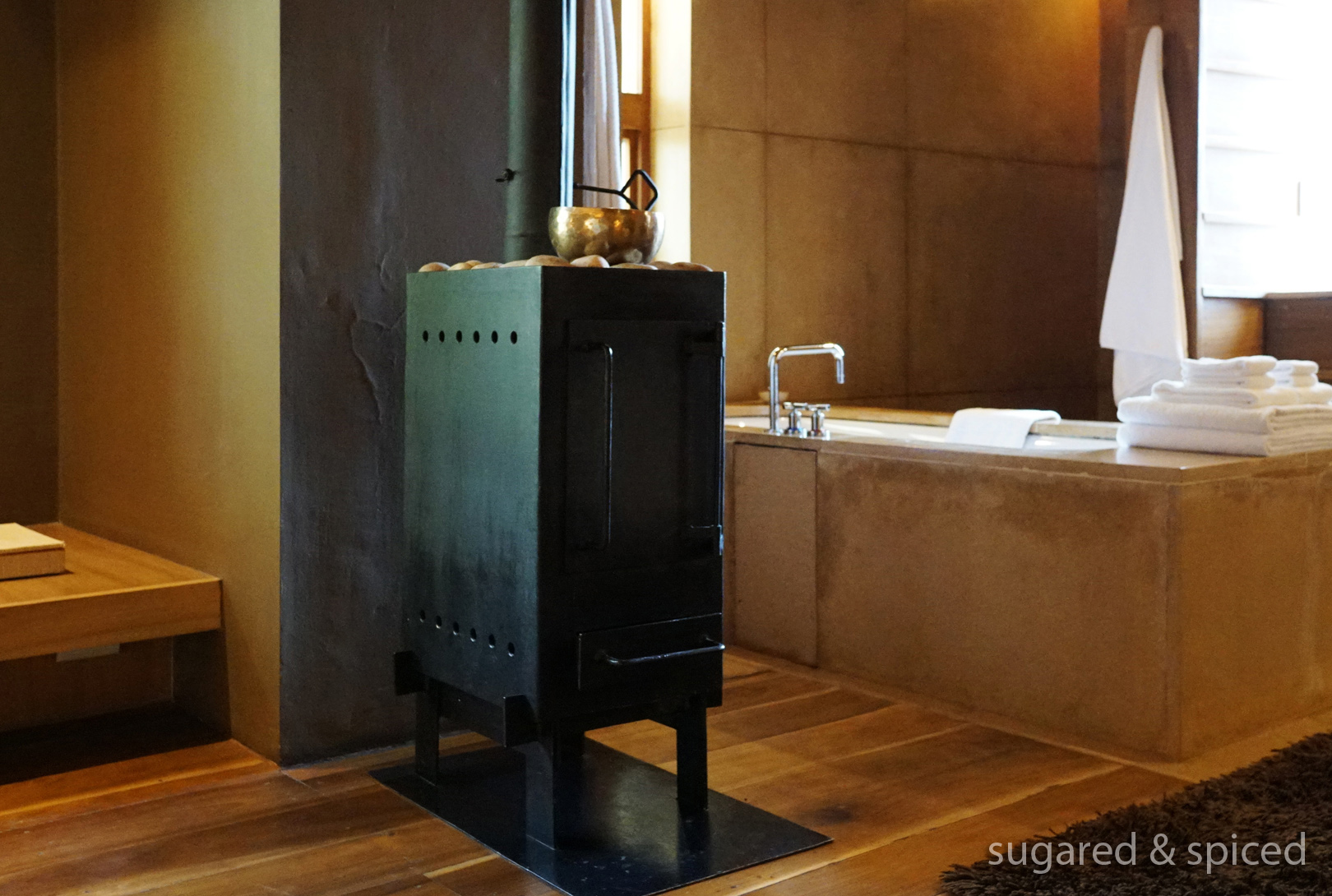
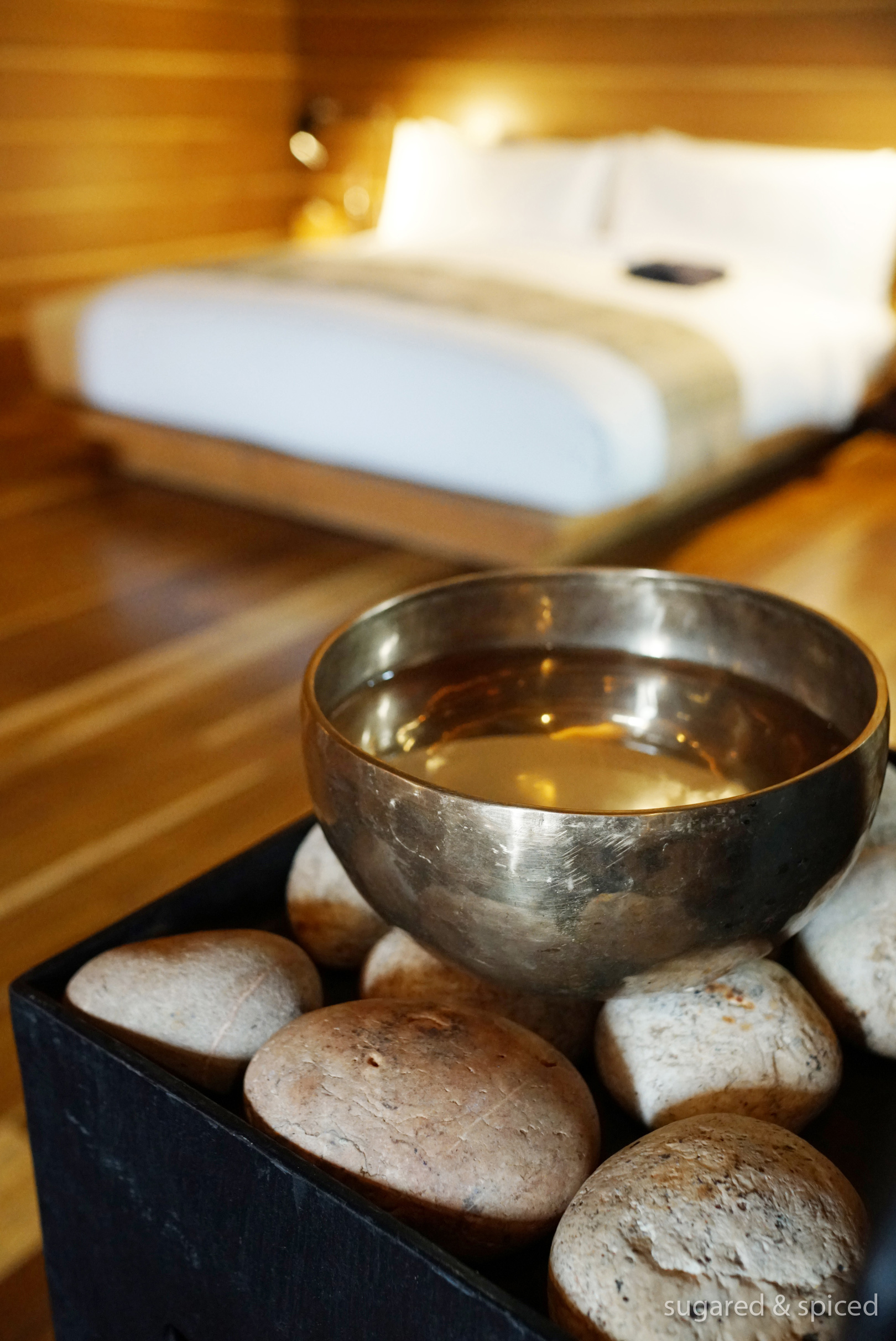
Plenty of water in the suite to keep us hydrated, each bottle labelled with fill date.
房裡處處都有飲用水,瓶子上細心地貼了日期。
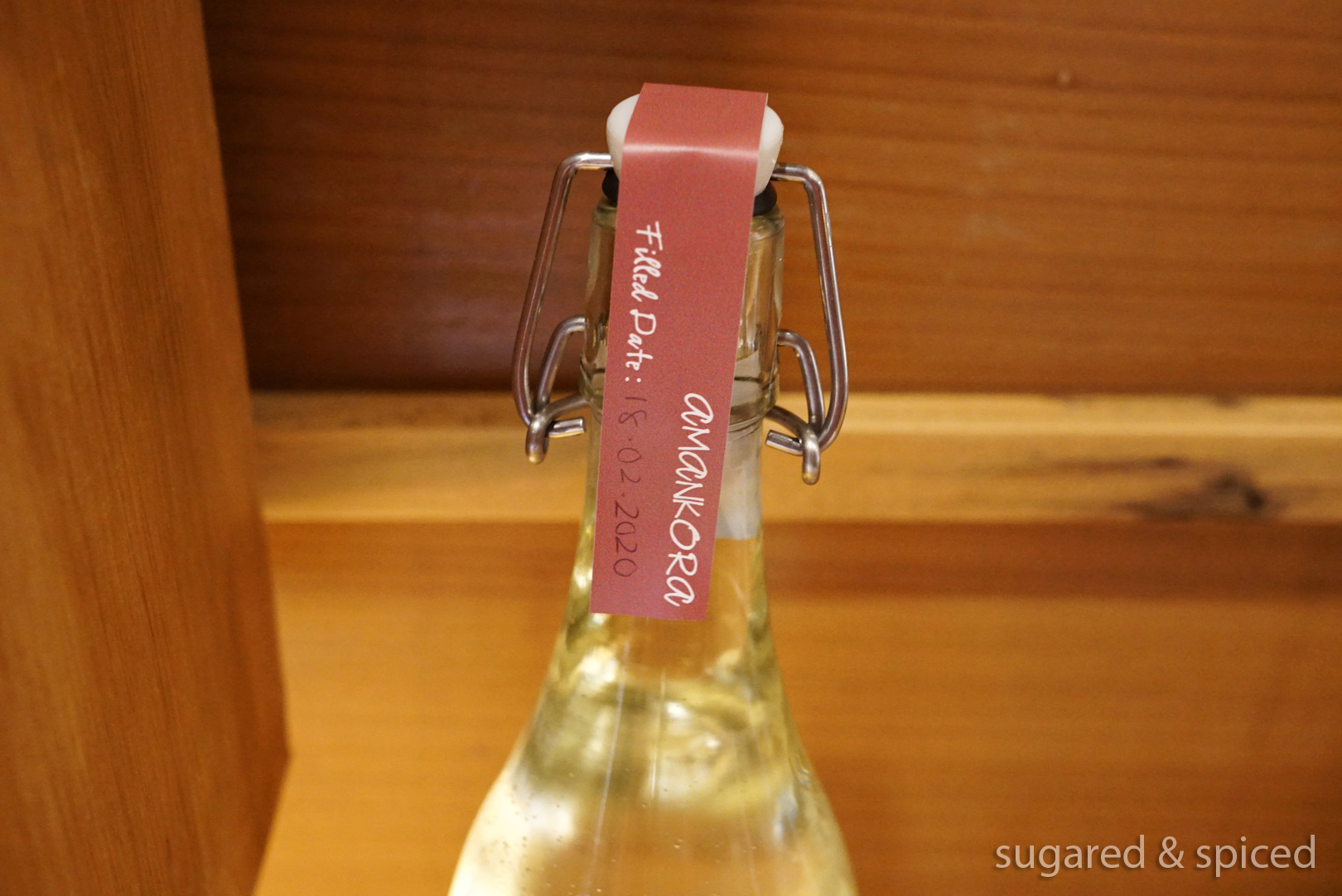
Pine cones and wood for the stove.
升火用的松果以及木材。
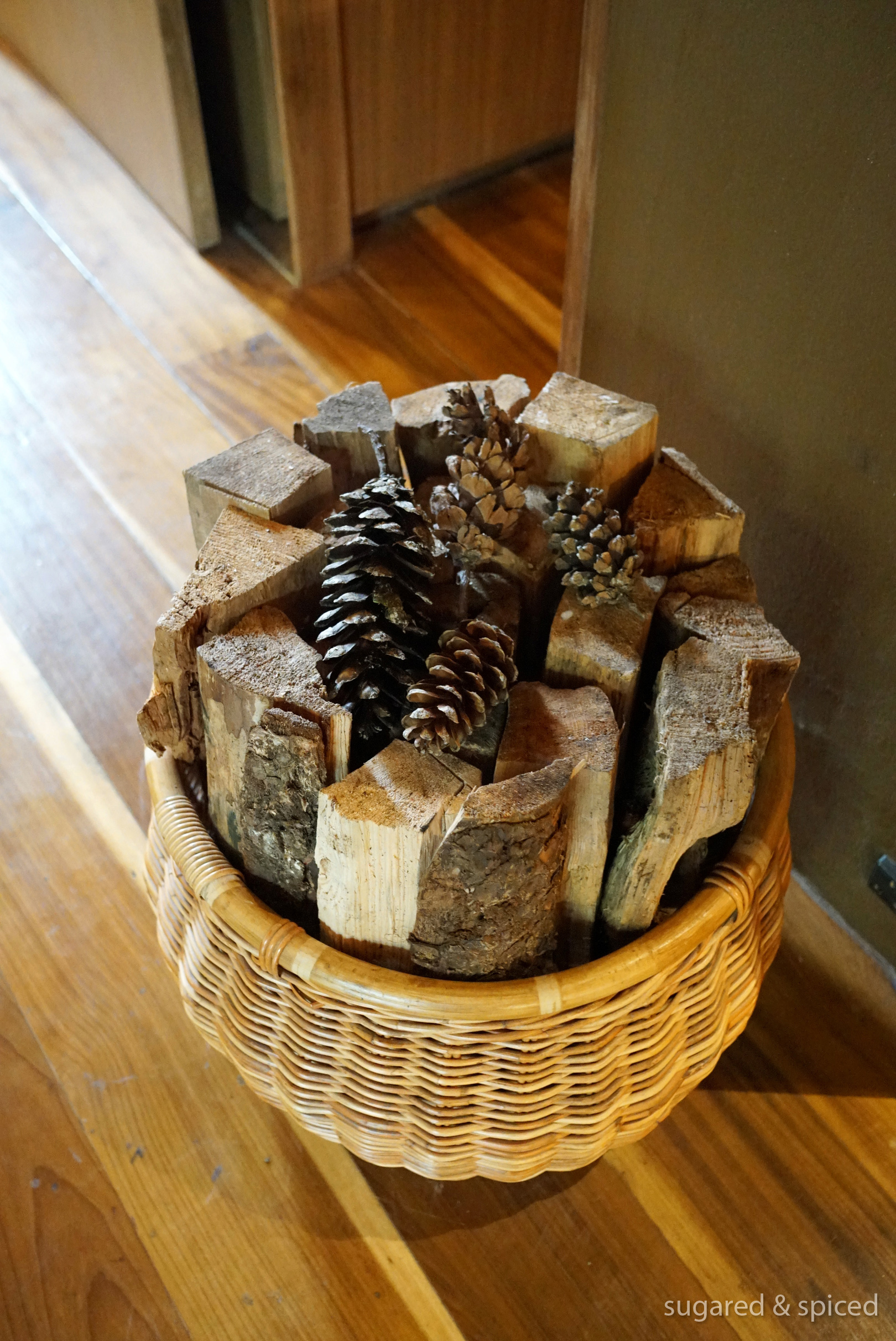
This keychain, creepy or cute?
有點詭異,有點可愛的鑰匙圈。
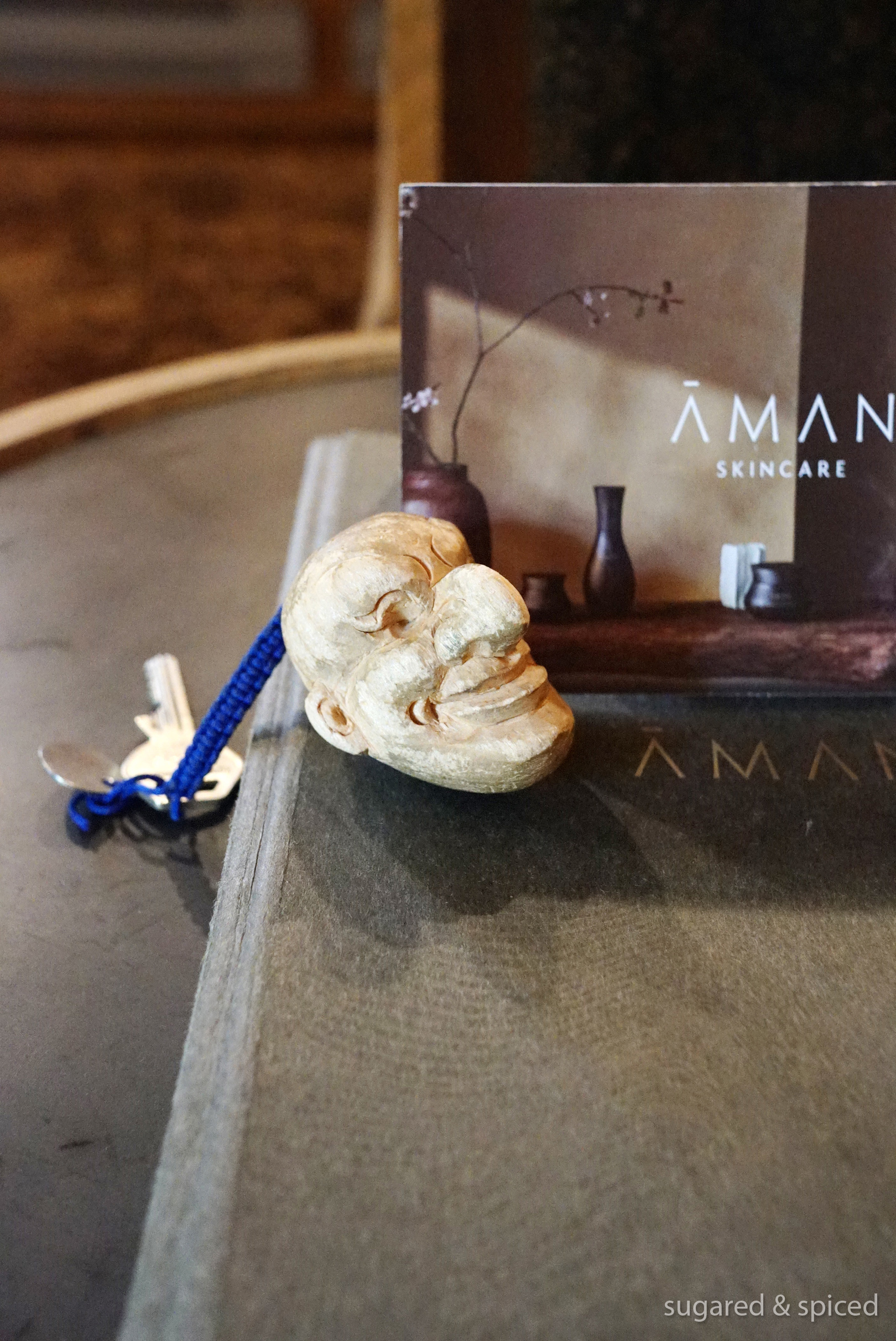
A bottle of chilled apple cider from Bumthang awaited us on the table.
Welcome drink 是一瓶來自 Bumthang 的蘋果西打,冰鎮著喝,酸甜清爽。
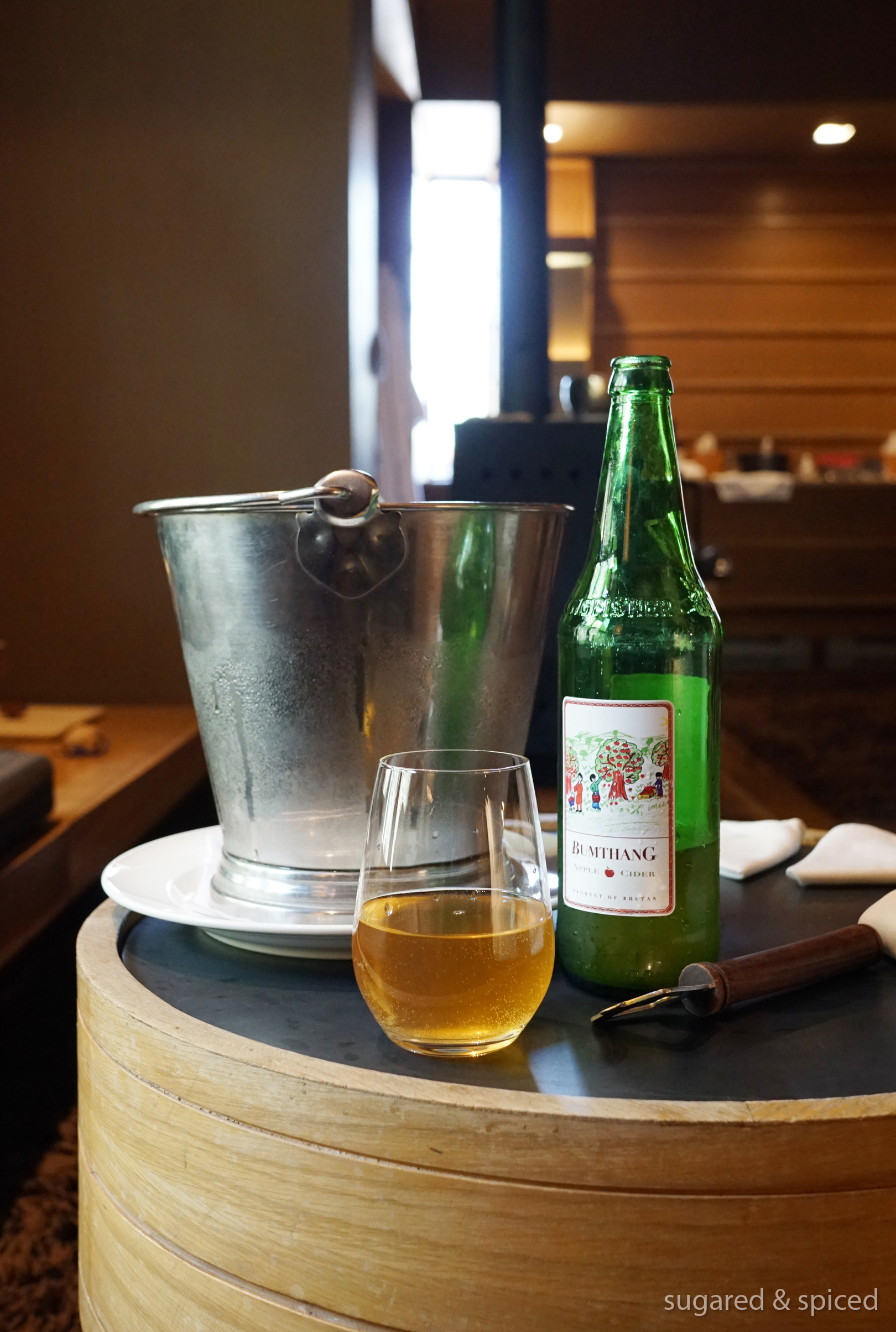
Room slippers – thick, warm, and soft on the feet.
厚實柔軟的拖鞋。
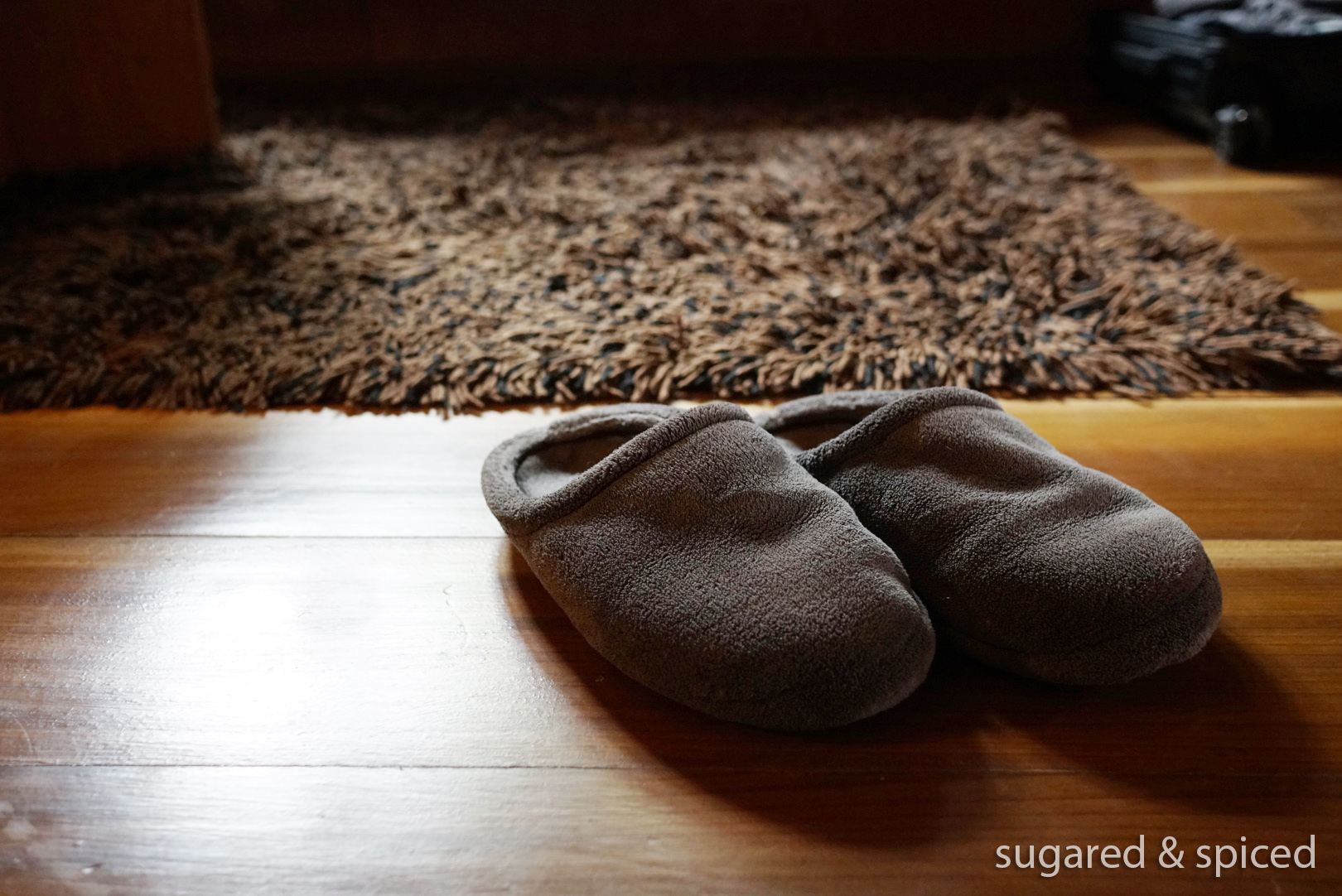
On the bed, a list of activities for us to choose from in Thimphu, as well as at our next destination, Gangtey. Everything is printed on local paper made from Daphne tree bark, which, when pulled off, regenerates over time. The Bhutanese paper, besides being beautiful, is eco-friendly.
床上放了在 Thimphu 和 Gangtey(下一站)的活動清單供我們參考。順帶一提,不丹的紙是用瑞香科植物的樹皮製作,樹皮剝下後會再生,所以這紙張不僅美麗,而且非常環保。
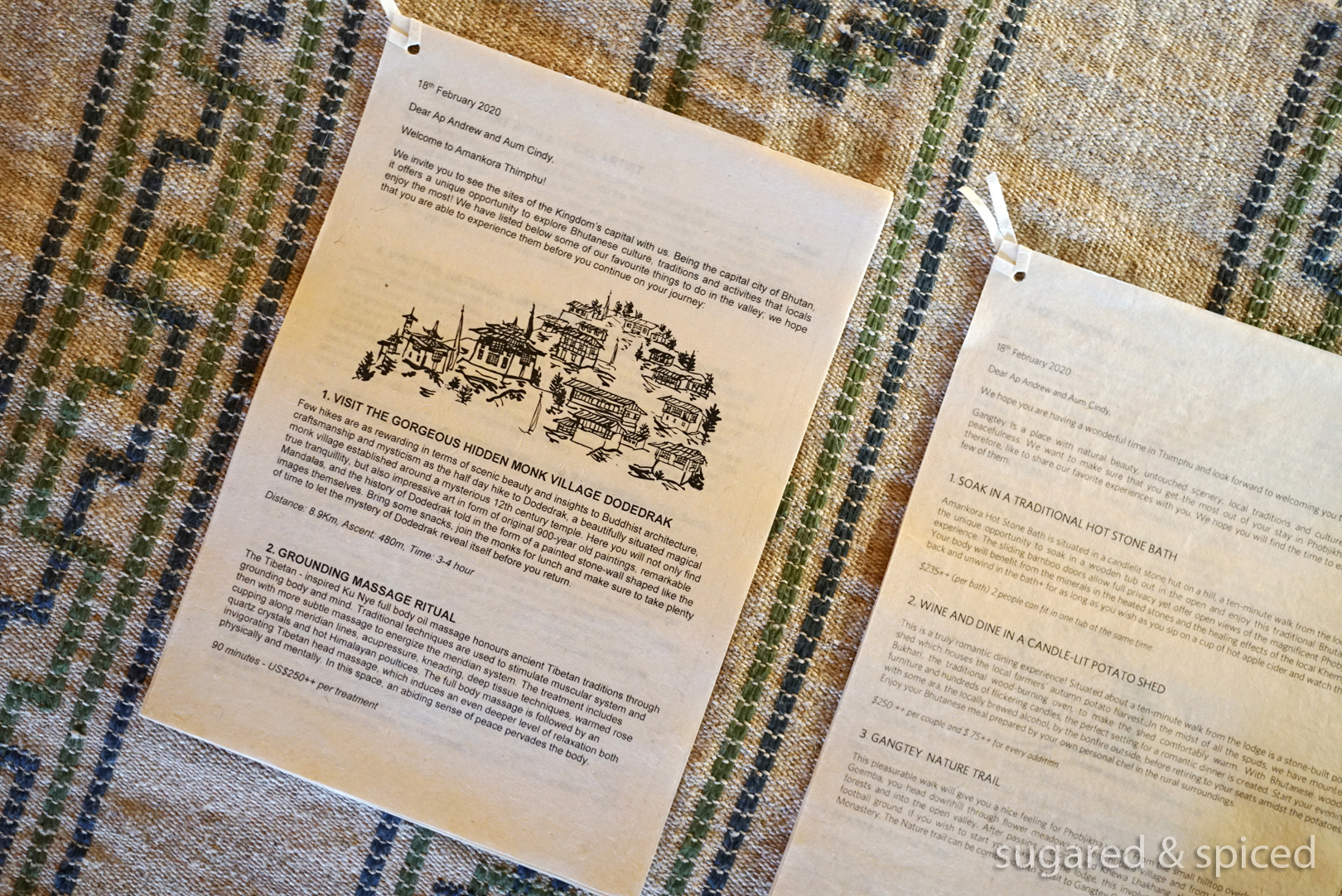
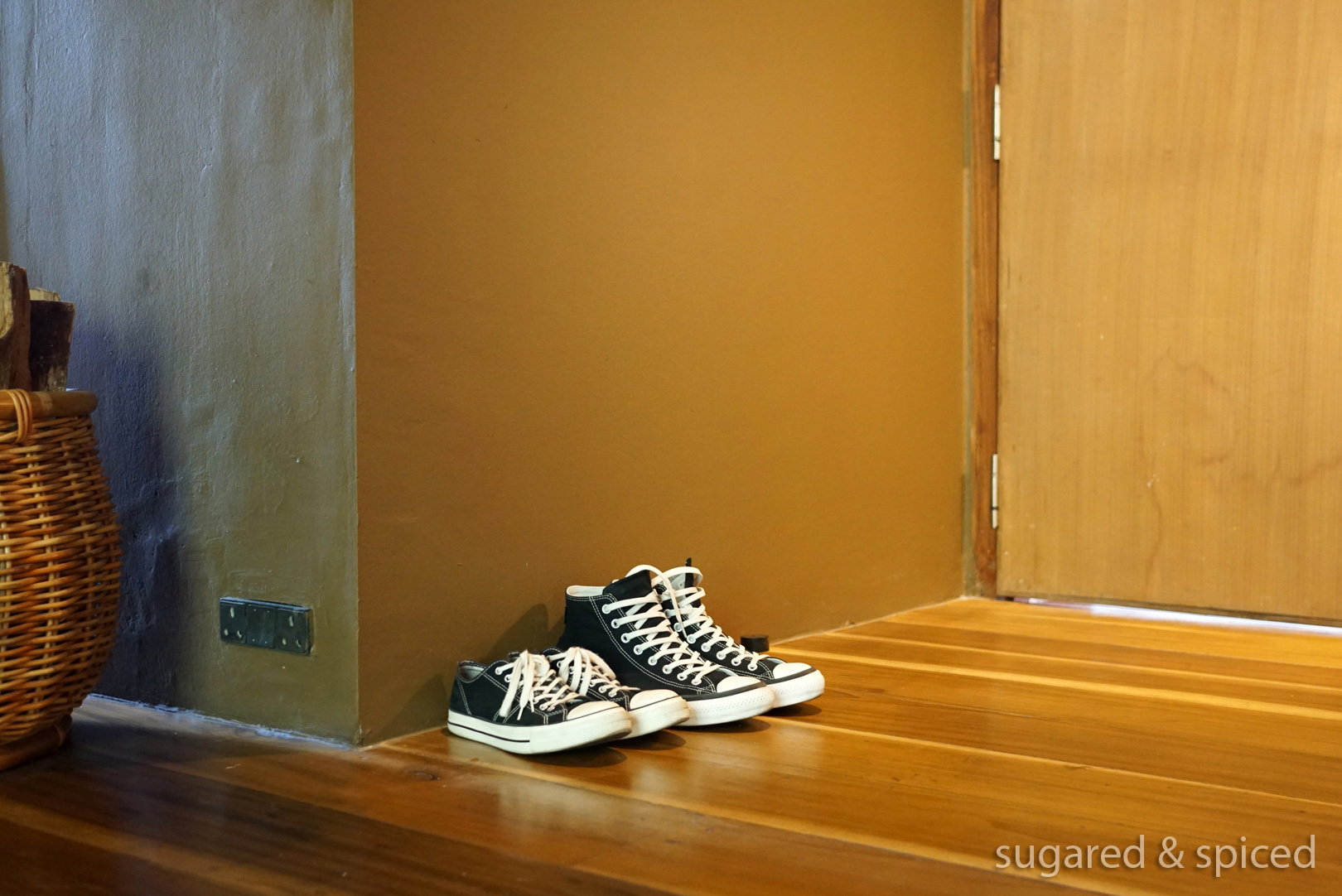
Once refreshed, we drifted over to the stone courtyard for a sunny lunch.
長途奔波後頗為疲累,決定當天不安排太多行程,先在陽光滿布的中庭好好吃個午餐再說。
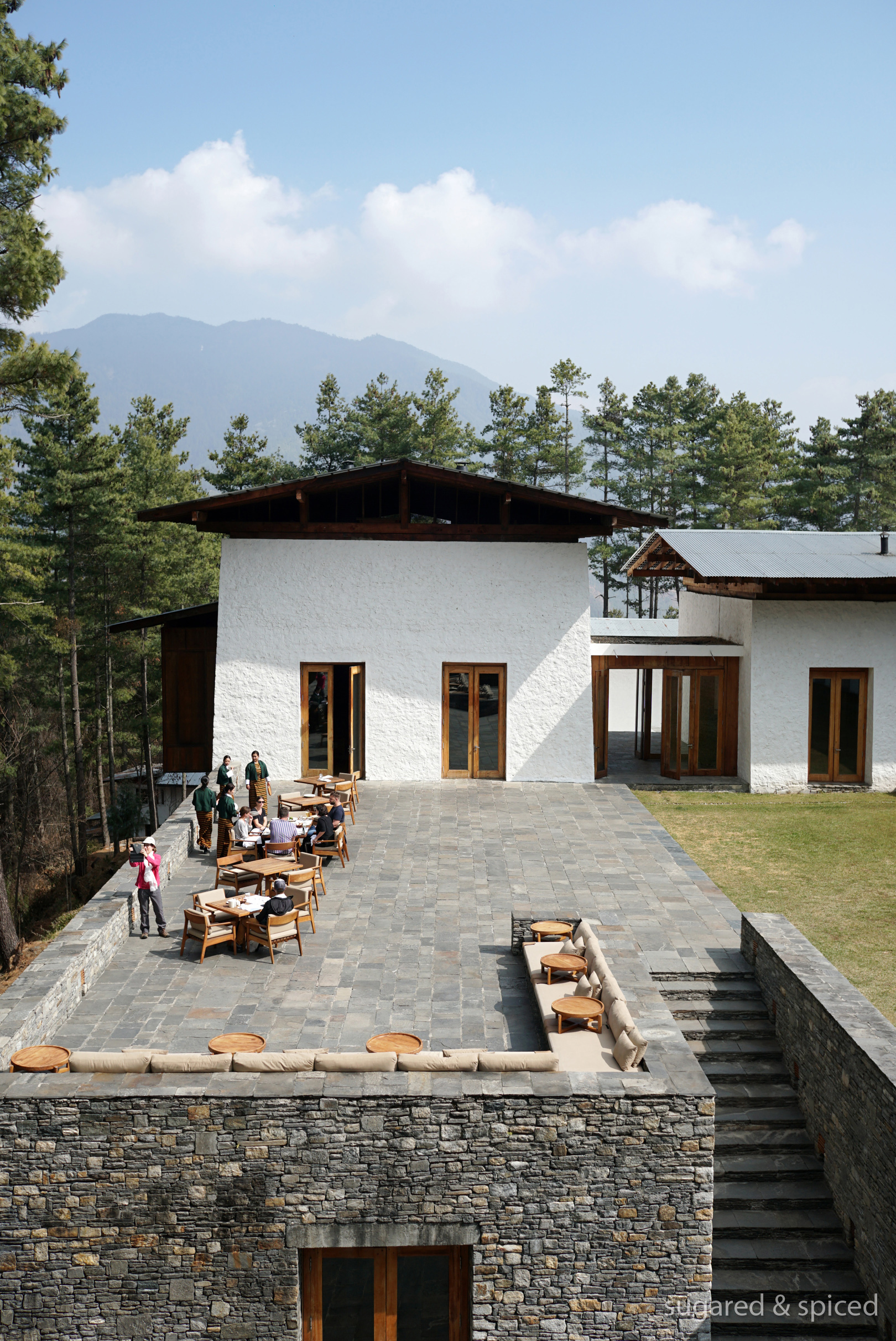
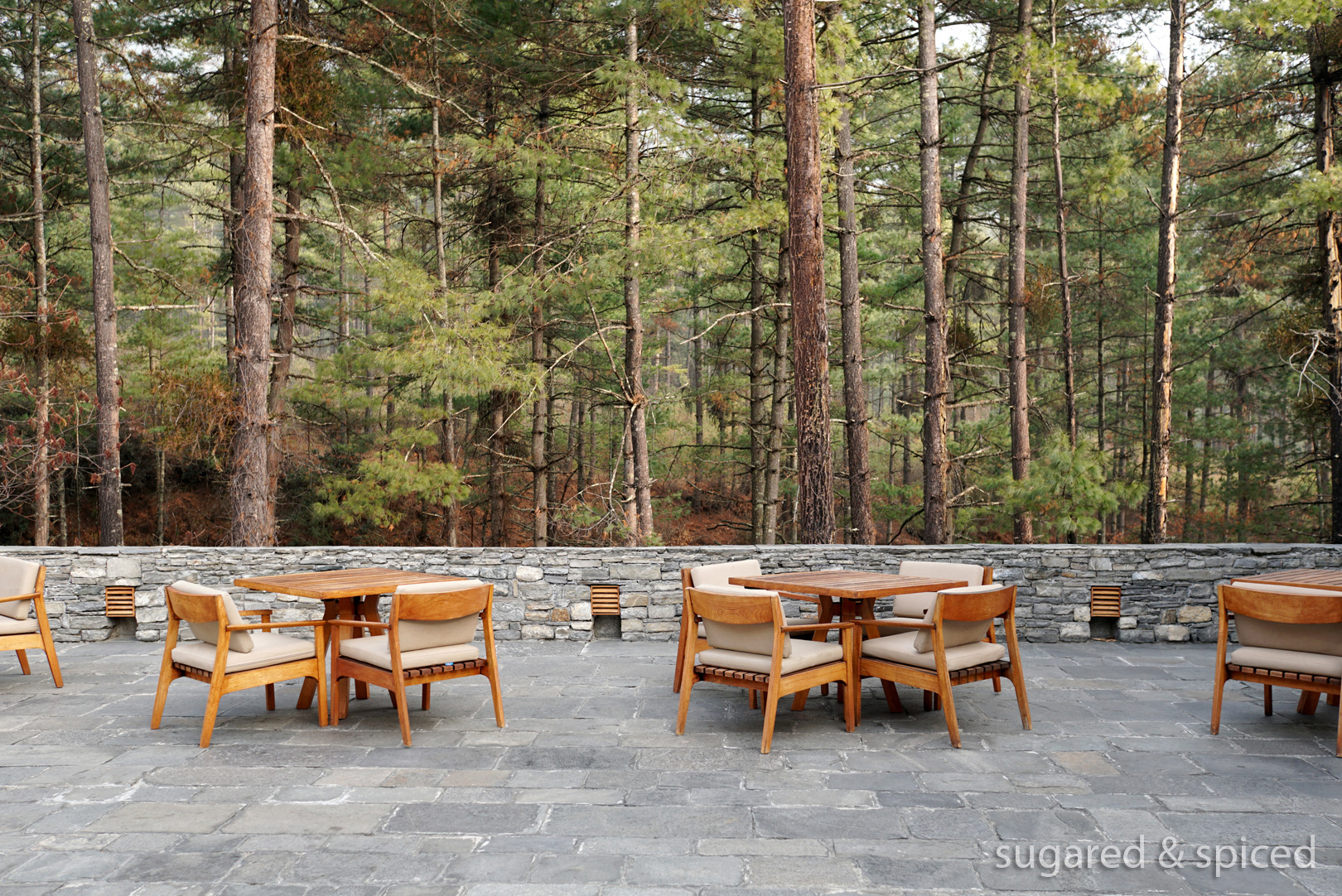
We decided to save the Bhutanese fare for dinner, and went for the western options on the menu: roasted carrot soup with saffron and yogurt, char grilled hamachi with eggplant caponata, red wine braised beef cheek with parmesan polenta and pumpkin agrodolce…all delicious.
不丹料理留到晚餐,中午,先試試西式菜色:藏紅花紅蘿卜湯、炭烤鰤魚佐茄子番茄燉菜、紅酒燉牛頰配帕瑪森玉米糕…啊,每一道都非常對味,沒想到在不丹也能吃到如此可口的西餐。
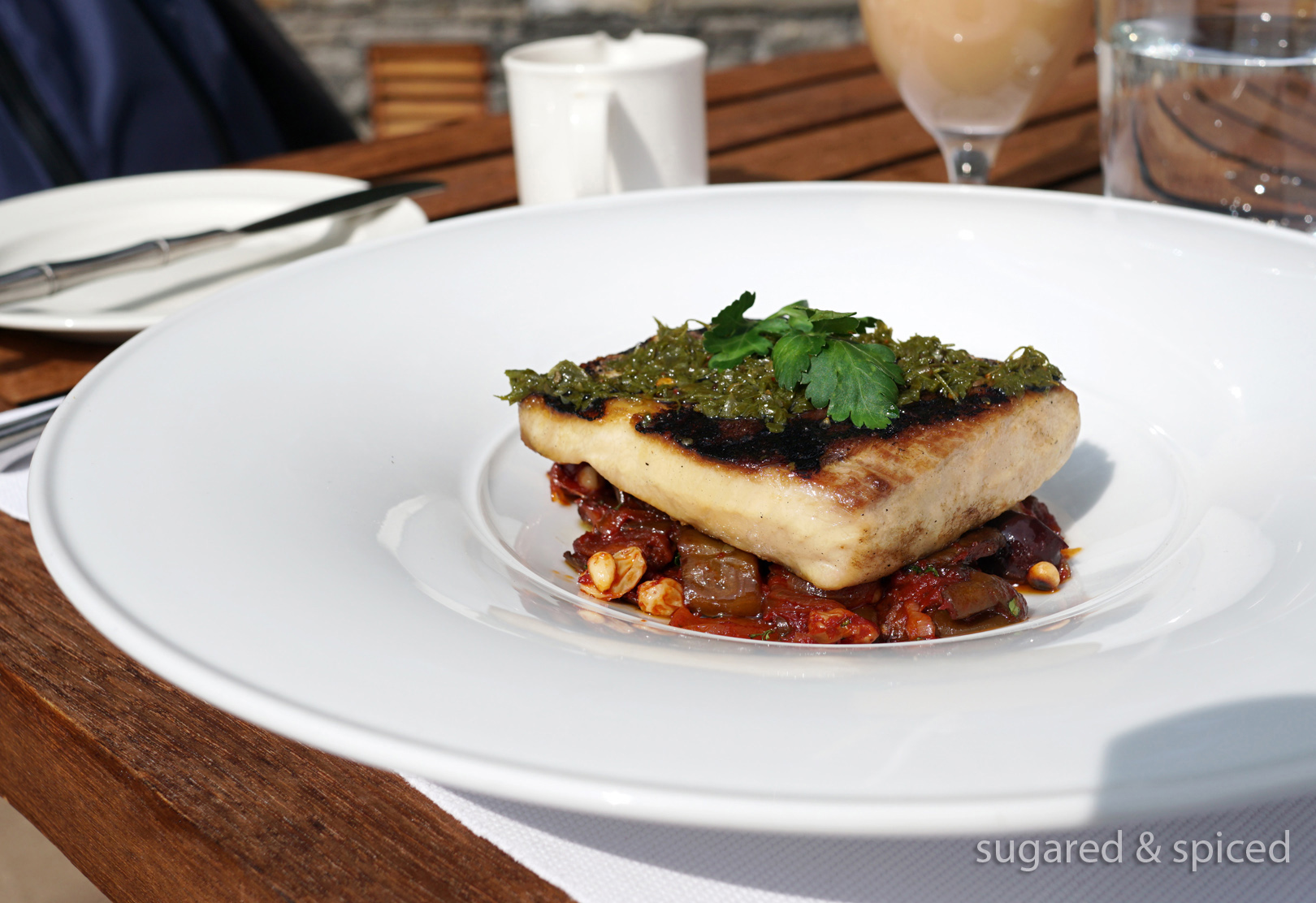
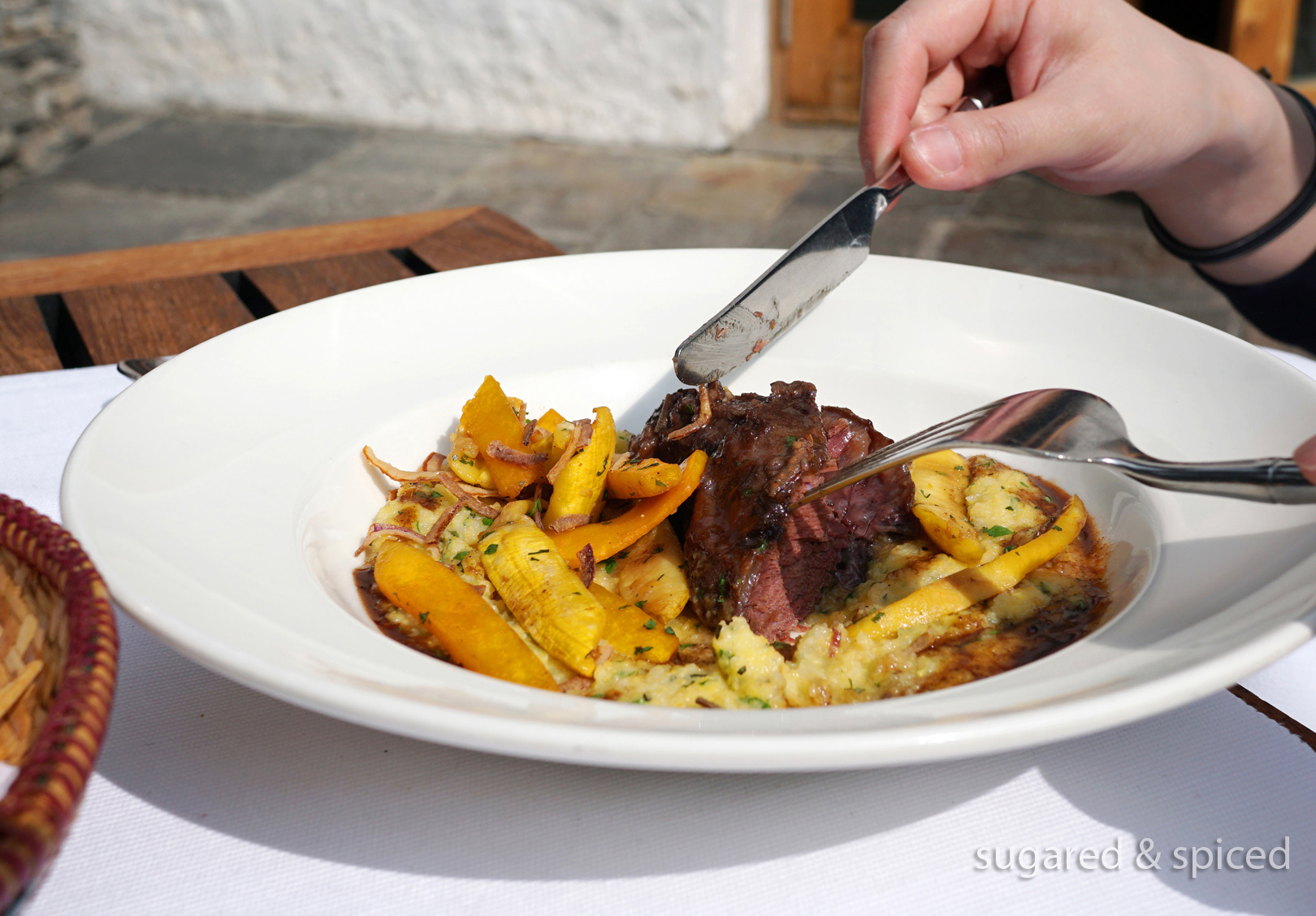
This was followed by a visit to the Great Buddha Dordenma, one of the world’s tallest and largest Buddha statues, built in celebration of the 60th anniversary of the fourth king Jigme Singye Wangchuck. The statue houses 125,000 mini Buddha statues, each of which, like the Buddha Dordenma itself, are made of bronze and gilded in gold, a major reason that the statue cost almost $100 million to build.
(Interesting fact: the number of buddha statues outnumbers the population of Thimphu, which is 100,000.)
午飯後不想走遠,於是 Dawa 帶我們去看了距離酒店僅十幾分鐘車程的金剛座釋迦牟尼佛像。這座佛像是為慶祝不丹第四任國王 Jigme Singye Wangchuck 的六十大壽所建造,是世界上最高最大的佛像之一,內部還藏著十二萬五千個迷你佛像,全都是黃銅制胎鍍金,據說造價達百萬美金。有趣的是 Thimphu 人口只有10萬人 – 這城市裡的佛像竟然比人多!
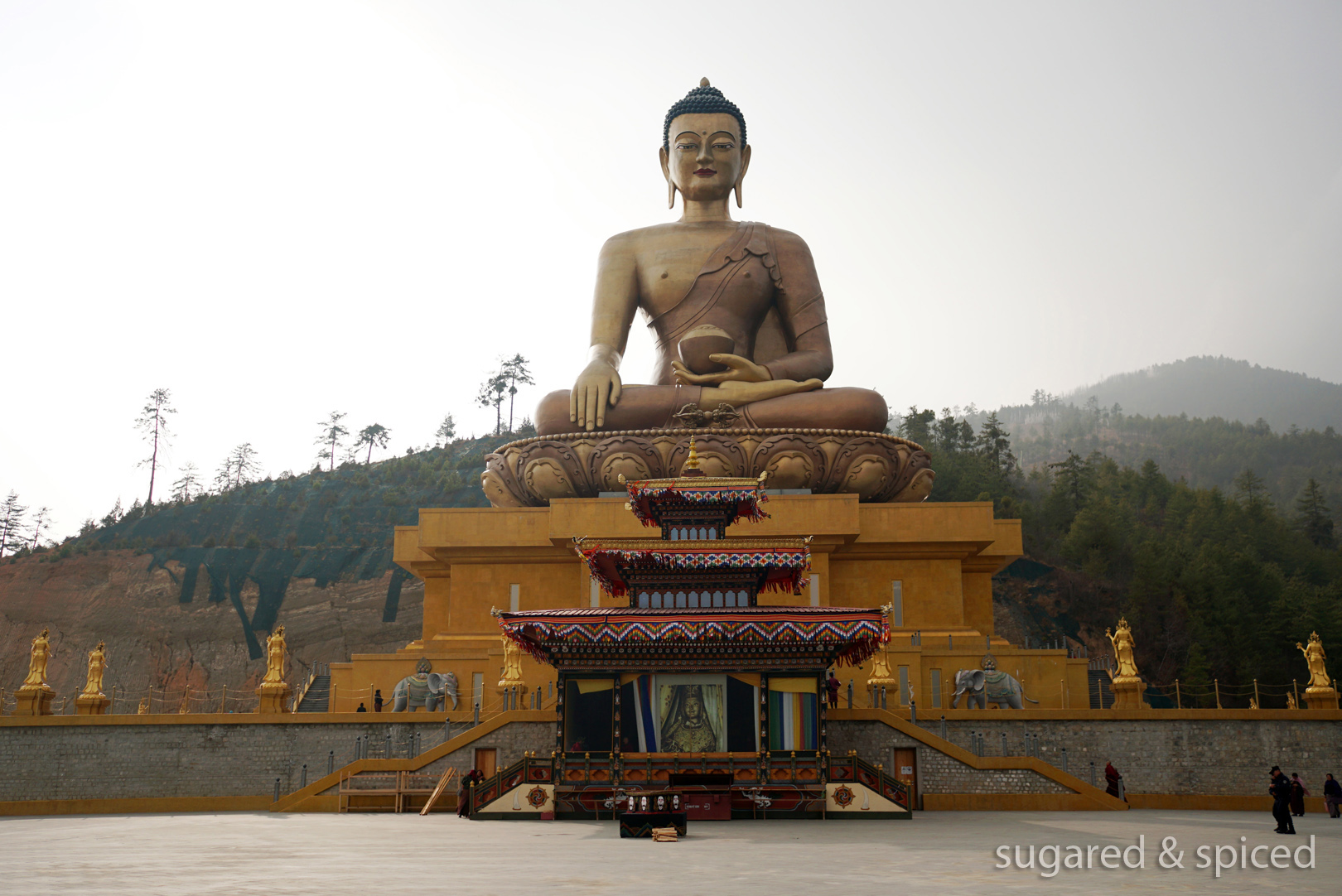
The meditation hall under the Buddha statue was alive with a few dozens of monks chanting and locals performing the Buddhist prostration. As we were soon to discover, Buddhism touches every corner of the Kingdom of Bhutan, infusing each day and each person with a profound sense of spirituality and serenity. This philosophy is so deeply woven into the fabrics of Bhutan, that it is as much a lifestyle as it is a religion.
One aspect that truly inspired me was that the Bhutanese pray not for the self, but for the wellbeing of all sentient beings in the world. I found this all-encompassing compassion to be tremendously generous and kind, and made a mental note to work on overcoming my own selfish emotions.
我們入佛堂參拜時正好有數十個和尚在念經,也有不少當地人在跪拜祈福。在不丹的這幾天,我深深感受到佛教對這片土地的深遠影響,即是宗教,也是生活方式,讓每個人、每一天,都多了一份靈性和寧靜。
我沒有宗教信仰,偶爾 “祈禱” 多半也是為了滿足一些非常私人的願望。然而據 Dawa 所說,不丹人嘴裡不停念著的經文不是為了私欲,而是將正能量散播出來,為眾生祈福。這種慷慨和善良在我心裡引起了小爆炸般的啟發…
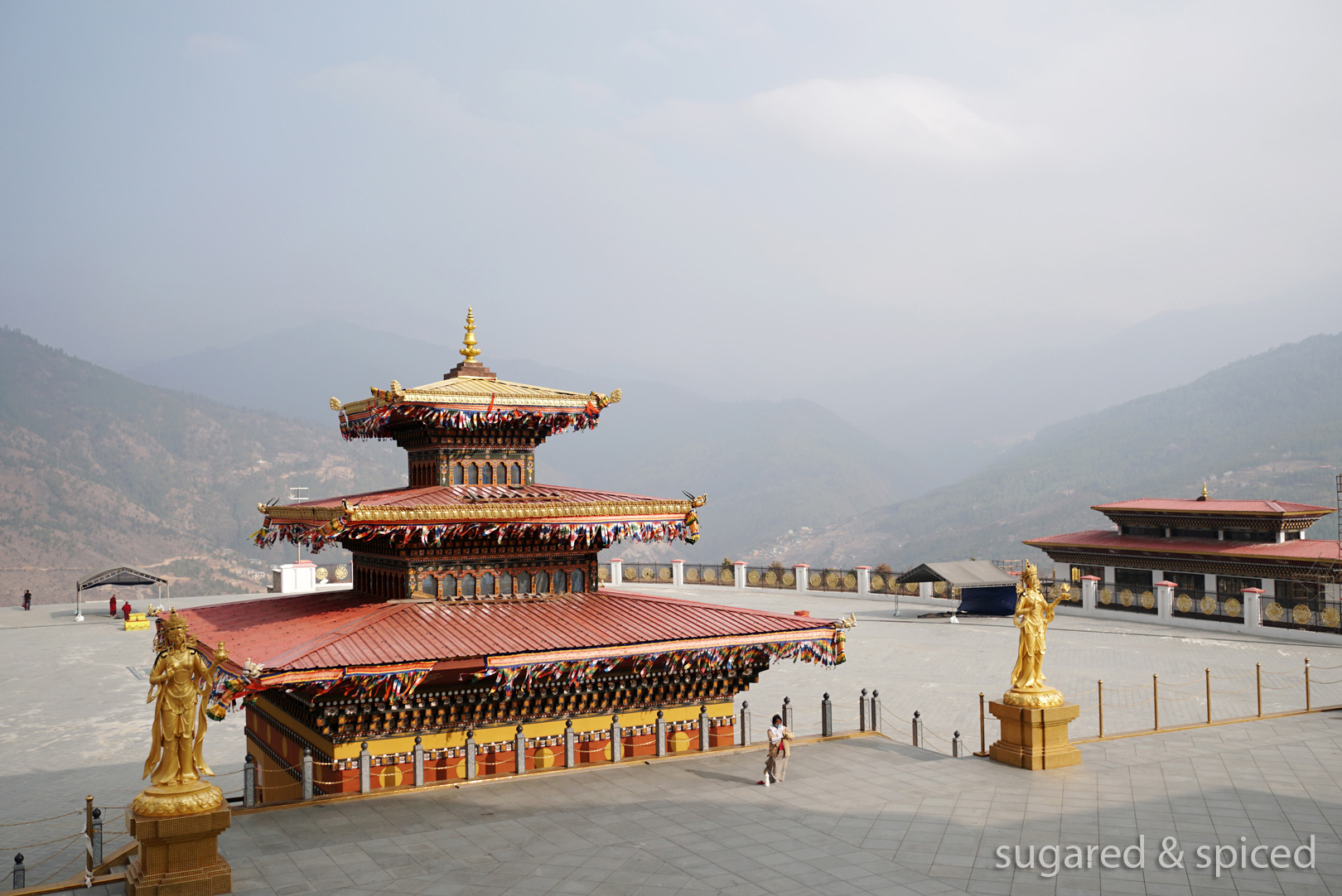
I’m unable to show you images of the interior as photos are prohibited within temples, but the hall was resplendent with the aforementioned 125,000 mini Buddha statues, butter lamps, incredibly intricate “tormas” (figures made of flour and butter used as offerings), and portraits of religious figures as well as of the royal family. In fact, portraits of the royal family are displayed everywhere in Bhutan – airport, schools, homes, temples, hotel lobbies…and it only takes talking to a few residents to realize that they really truly love their king and queen. More on this later.
由於不丹寺廟內禁止拍照,我無法用照片將室內的樣貌呈現給你。總之內部相當輝煌,有剛才提到的十二萬五千個迷你佛像、飄忽閃爍的酥油燈、極度細緻的 “tormas”(用麵粉和奶油做成的奉獻品),以及佛教人物和不丹皇室成員的肖像。話說,皇室成員的肖像在不丹隨處可見,無論在機場、學校、寺廟、酒店大堂…只要跟幾個當地人聊會兒天,就能發現他們打從心底愛戴他們的國王與皇后。這一點,稍後再細聊。
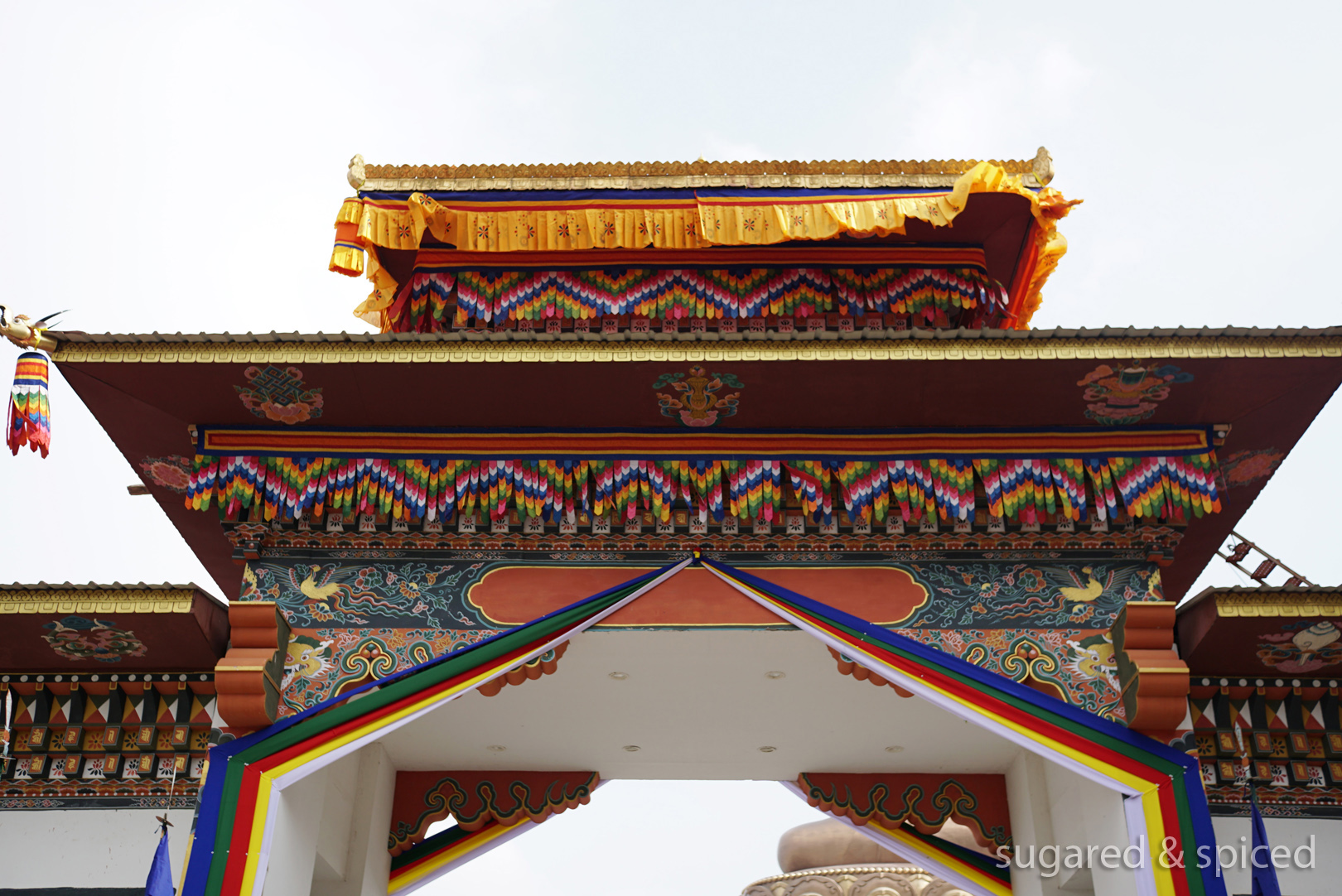
We got back to the lodge just in time for a viewing of traditional dances. The temperature had dropped to about 5 degrees Celsius, but there was a roaring bonfire, hot water bags, wool blankets, and an endless supply of hot tea to keep us warm while our eyes stayed fix on the bewitching movements of the dancers.
參拜完大佛,回到 Amankora 欣賞傳統舞蹈。這時氣溫降到5度左右,不過工作人員準備了熊熊篝火、熱水袋、毛毯、以及熱乎乎的茶,坐在室外仍舒舒服服。
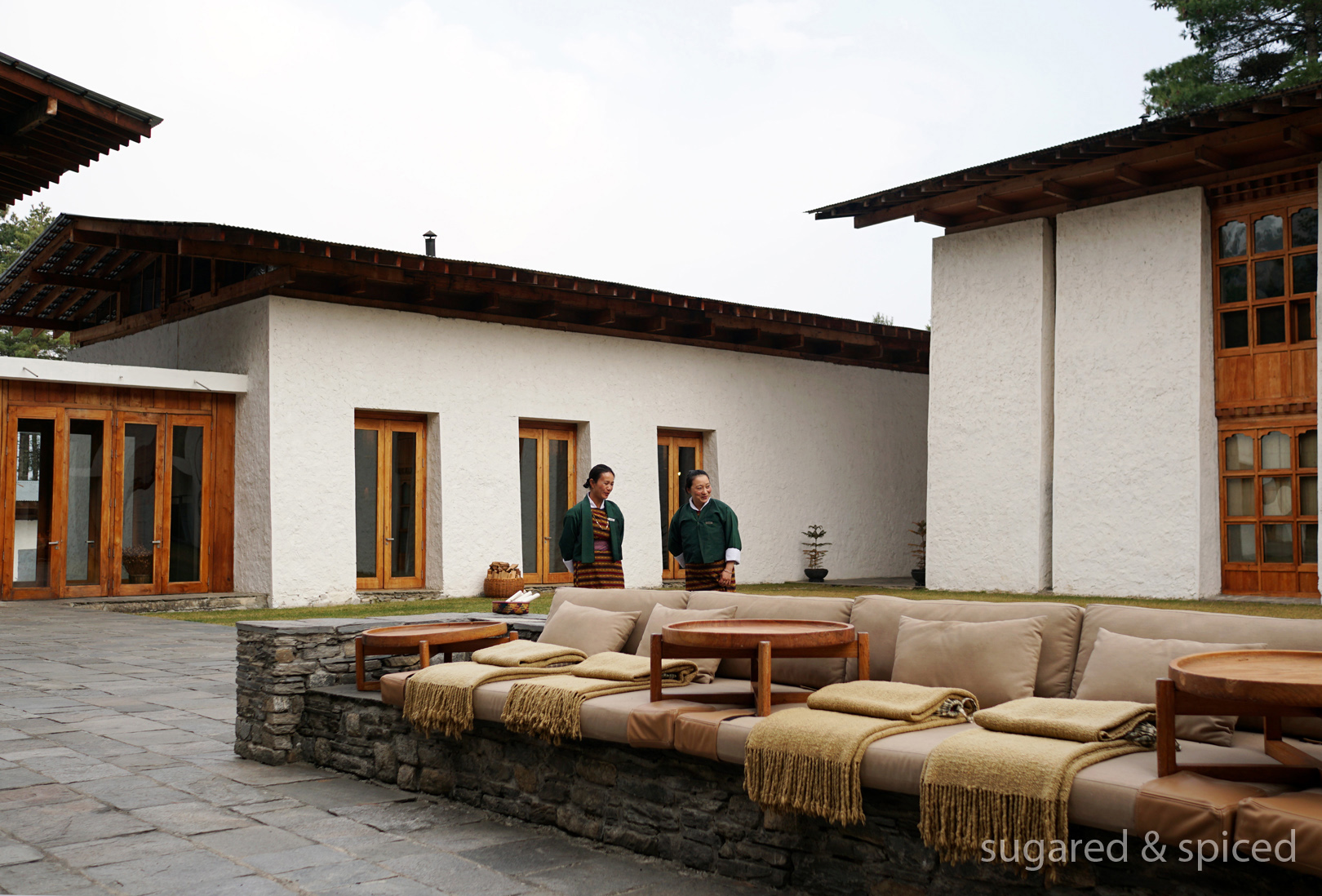
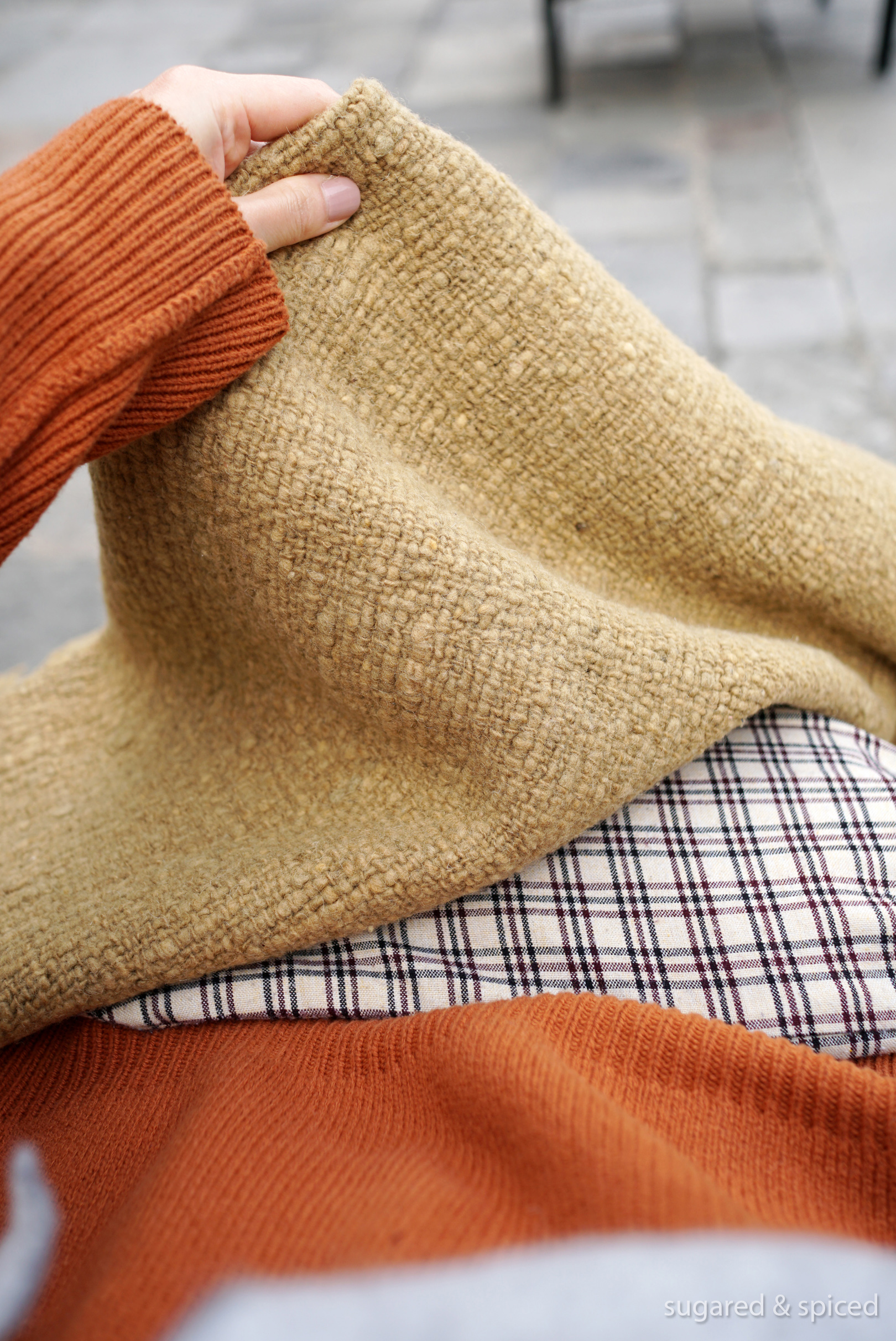
The program was printed on a scroll of local paper, tied together by “old man’s beard”, a lichen commonly found in pine forests in Bhutan.
用來捆住節目單紙捲的是一種在不丹常見的、叫做 “老人鬍子” 的地衣植物,完全天然。
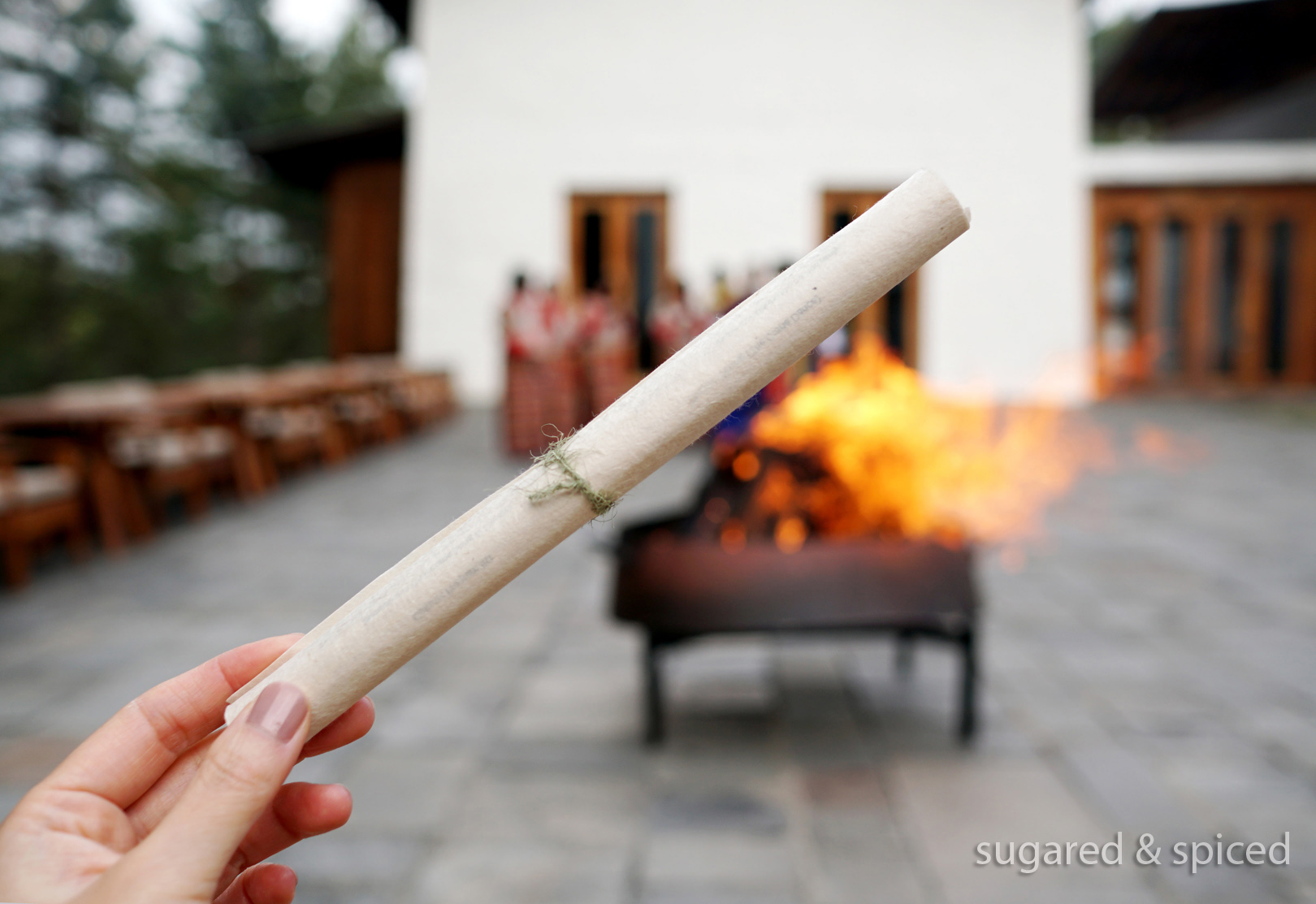
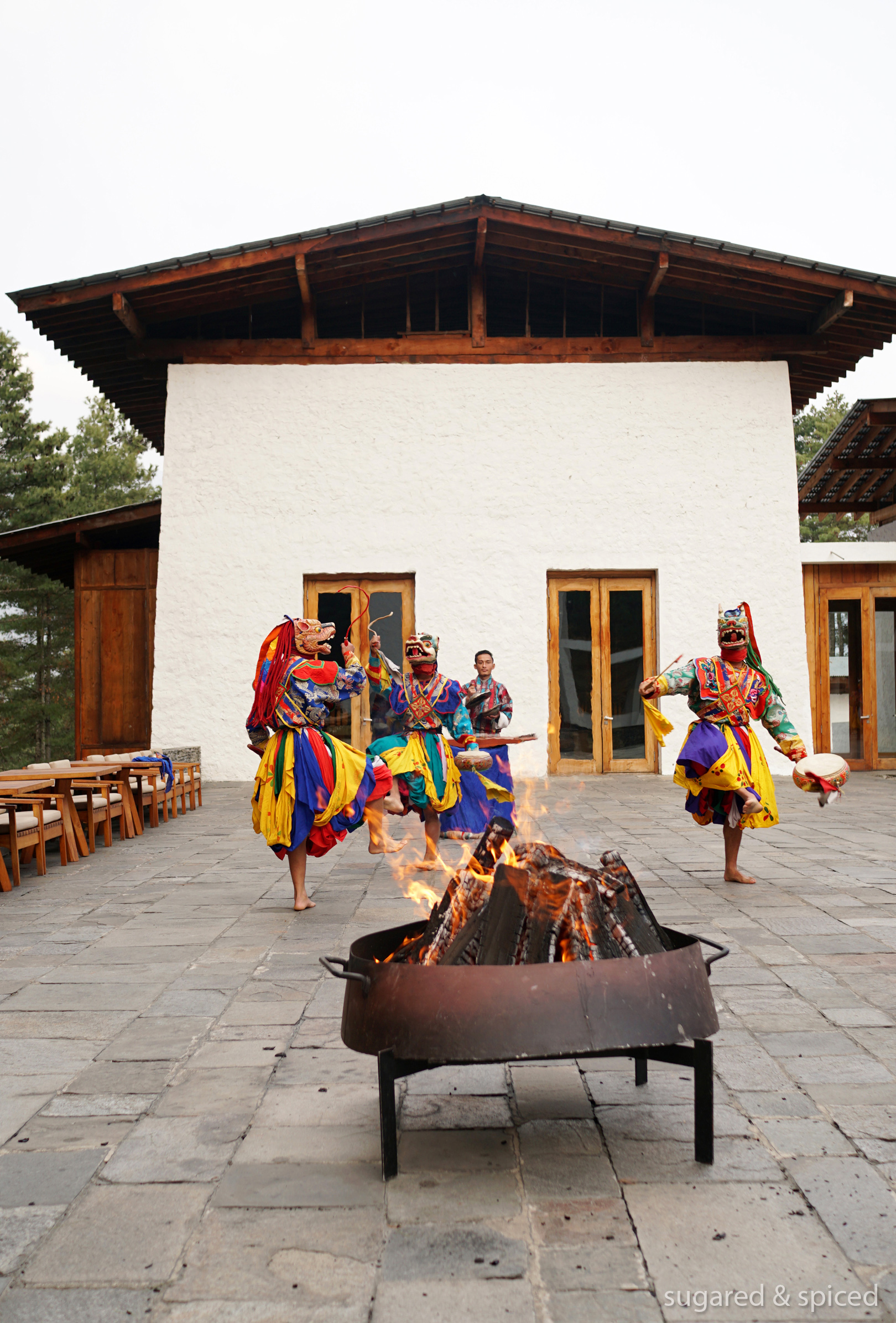
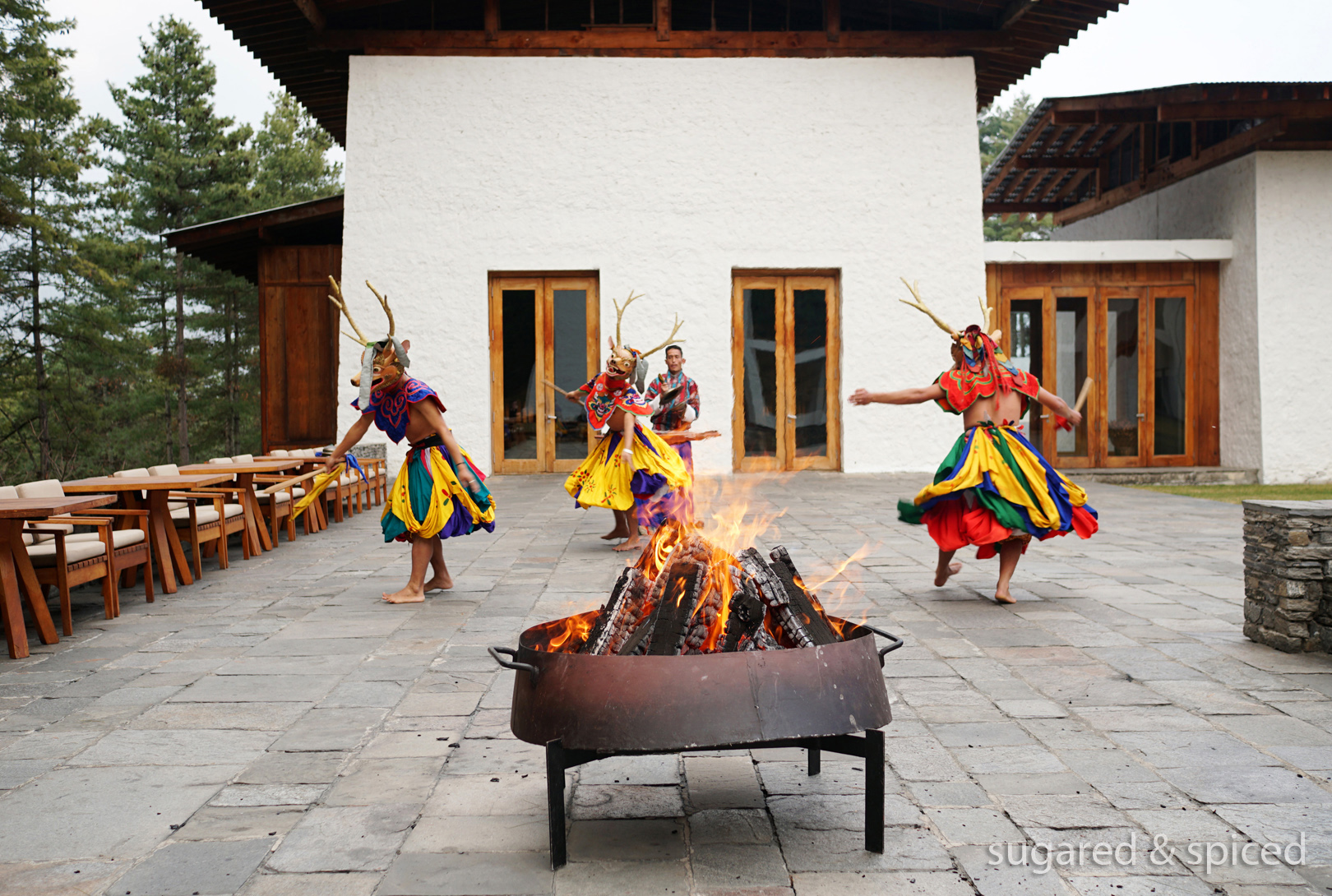
We also got an extremely rare opportunity to sit down with the much venerated Mynak R. Tulku Rinpoche. He is the 12th reincarnate lama of Mynak Rinpoche, who was the spiritual leader of the Mynak province in the Eastern region of Tibet. Mynak Tulku Rinpoche has lived in Bhutan for over 30 years and worked in various capacities, including as the founder and director of the National Museum in Paro and the National Library in Thimphu.
Amongst the many topics he touched on, one that was especially interesting to me was the concept of impermanence. One of the foundational premises of Buddhism is that no physical and mental events are constant or permanent, that they come into being and dissolve. It may seem contradictory, but knowing that change is inevitable and life is ephemeral makes each moment rich with possibilities…
當晚還有一個意外的驚喜 – Amankora 請到備受尊敬的 Mynak R. Tulku 仁波切來到酒店的圖書館,給我們上一堂佛學講座。Mynak Tulku 仁波切是來自西藏東部的轉世活佛,在不丹已居住30年,除了是一位德高望重的高僧,也是帕羅國家博物館的發起者,並曾擔任首都廷布國家圖書館的館長。
他坐在椅子上啜著熱茶,不疾不徐地跟我們聊起佛教哲學。其中我個人覺得非常有趣的是 “無常” 這個概念,意指一切事物都不會永恆存在,都會經歷一個從產生到滅亡的過程。雖然這樣講似乎有些矛盾,但正因生命無常,所以也讓每個瞬間充滿了可能性…
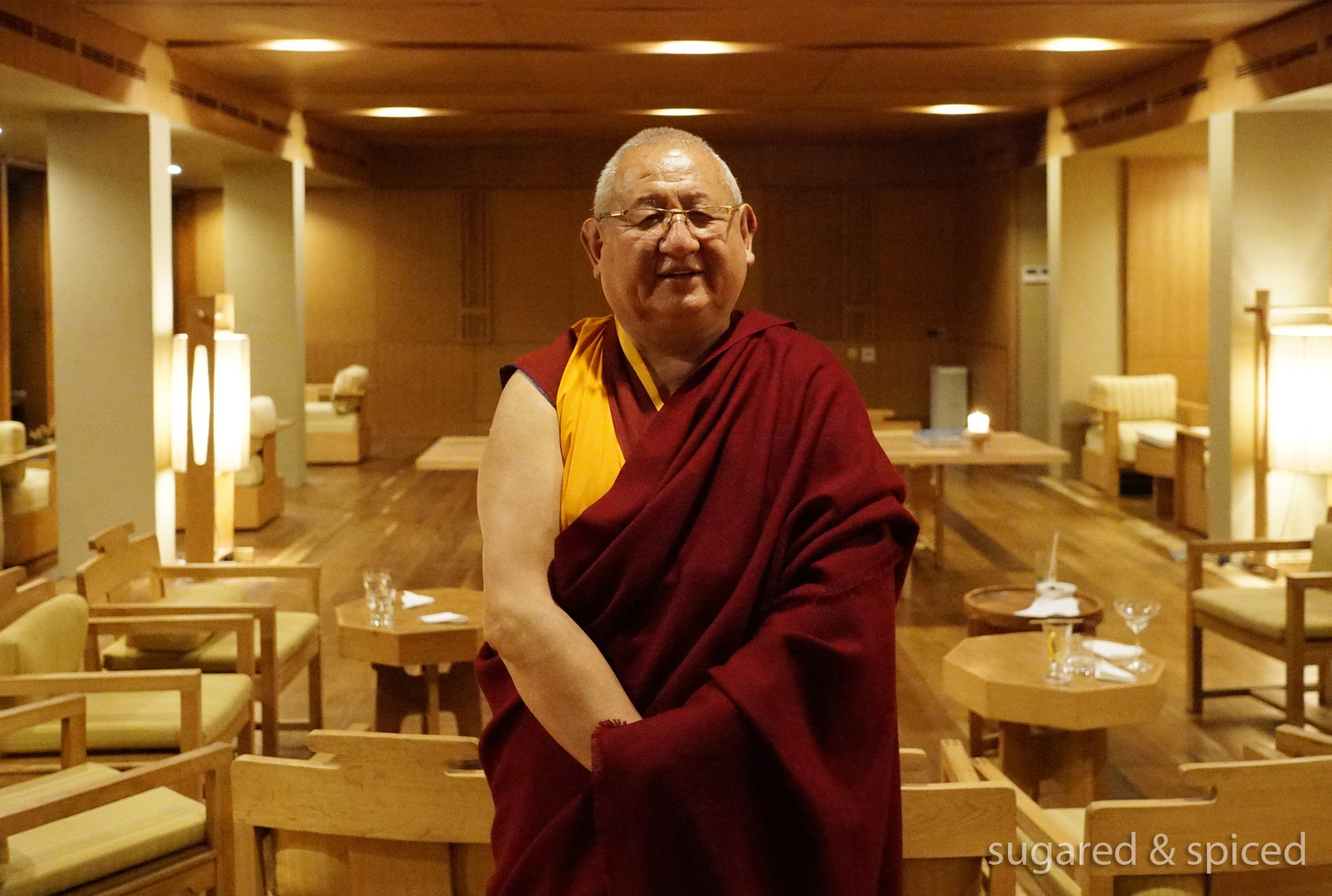
To end the day, a feast of local dishes, starting with hoentshey om jaju, a milk and spinach soup.
不丹的第一天,以豐盛的不丹料理做結尾。首先來一碗非常濃郁、暖胃的 “hoentshey om jaju” 牛奶菠菜湯。
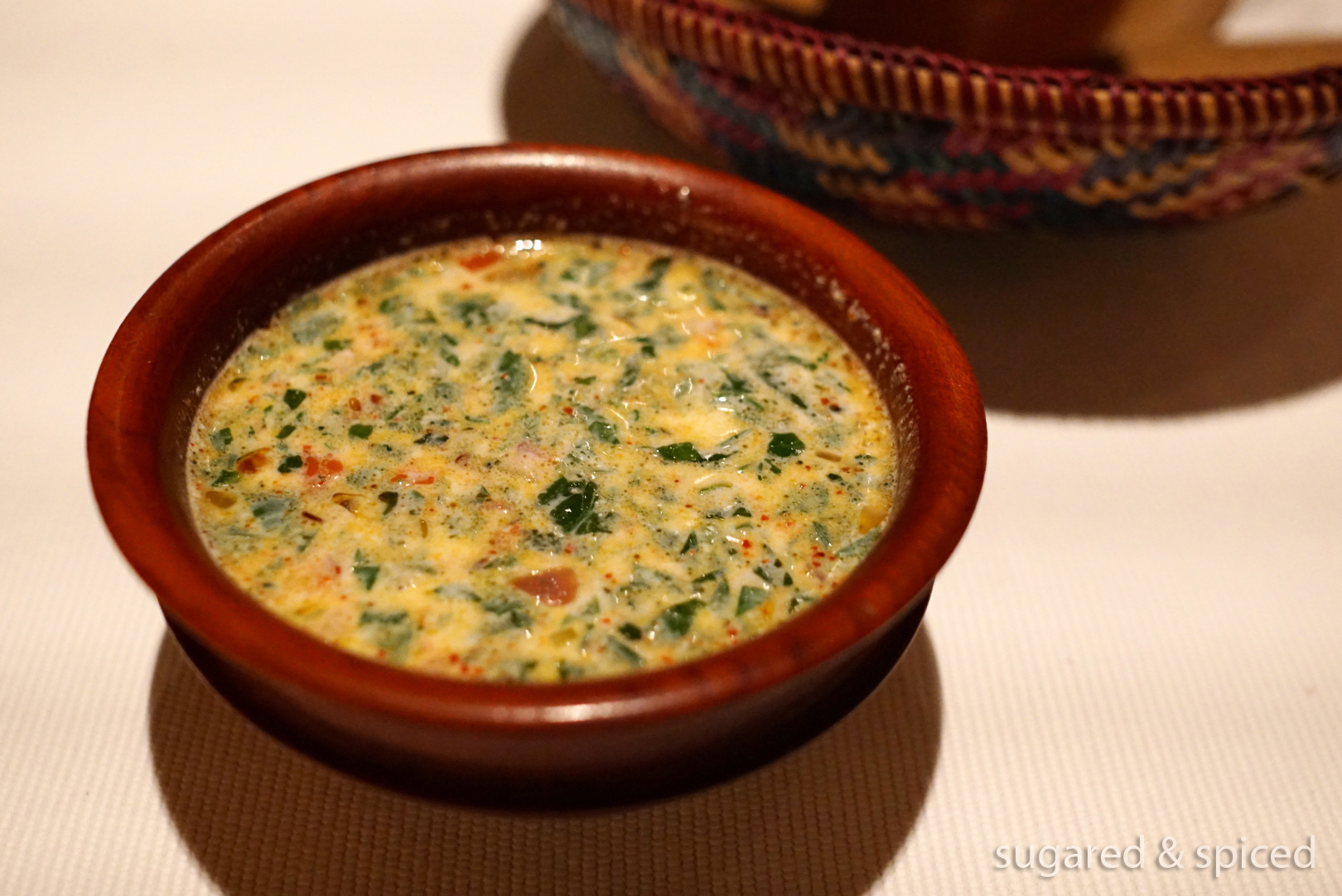
Khuley, local buckwheat pancake with ezay, chili condiment.
“Khuley”,當地的蕎麥餅搭配 “ezay” 辣椒醬。
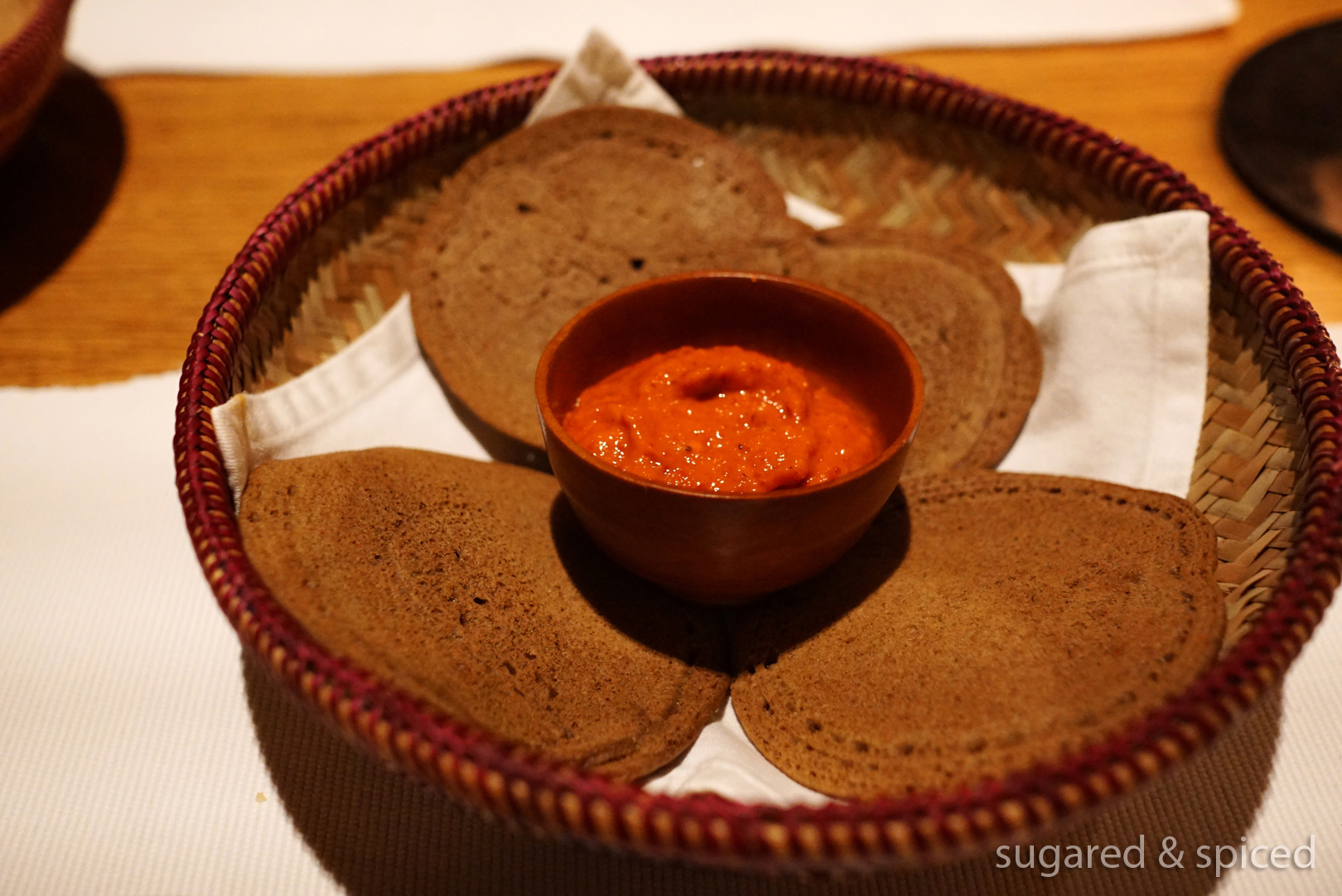
Then, steamed local red rice served with 6 dishes: Bhutanese style chicken, air dried pork with local cheese, broccoli curry, cauliflower with local cheese, radish salad, sautéed local mushrooms…Simple dishes with powerful flavors, I was in love!
接著是不丹特有的紅米飯以及搭配的六道菜:不丹燉雞、風乾豬肉炒本地芝士、花椰菜咖哩、起司燉白花菜、蘿卜沙拉、炒本地蘑菇…看似樸實無華卻滋味充盈,我非常喜歡!
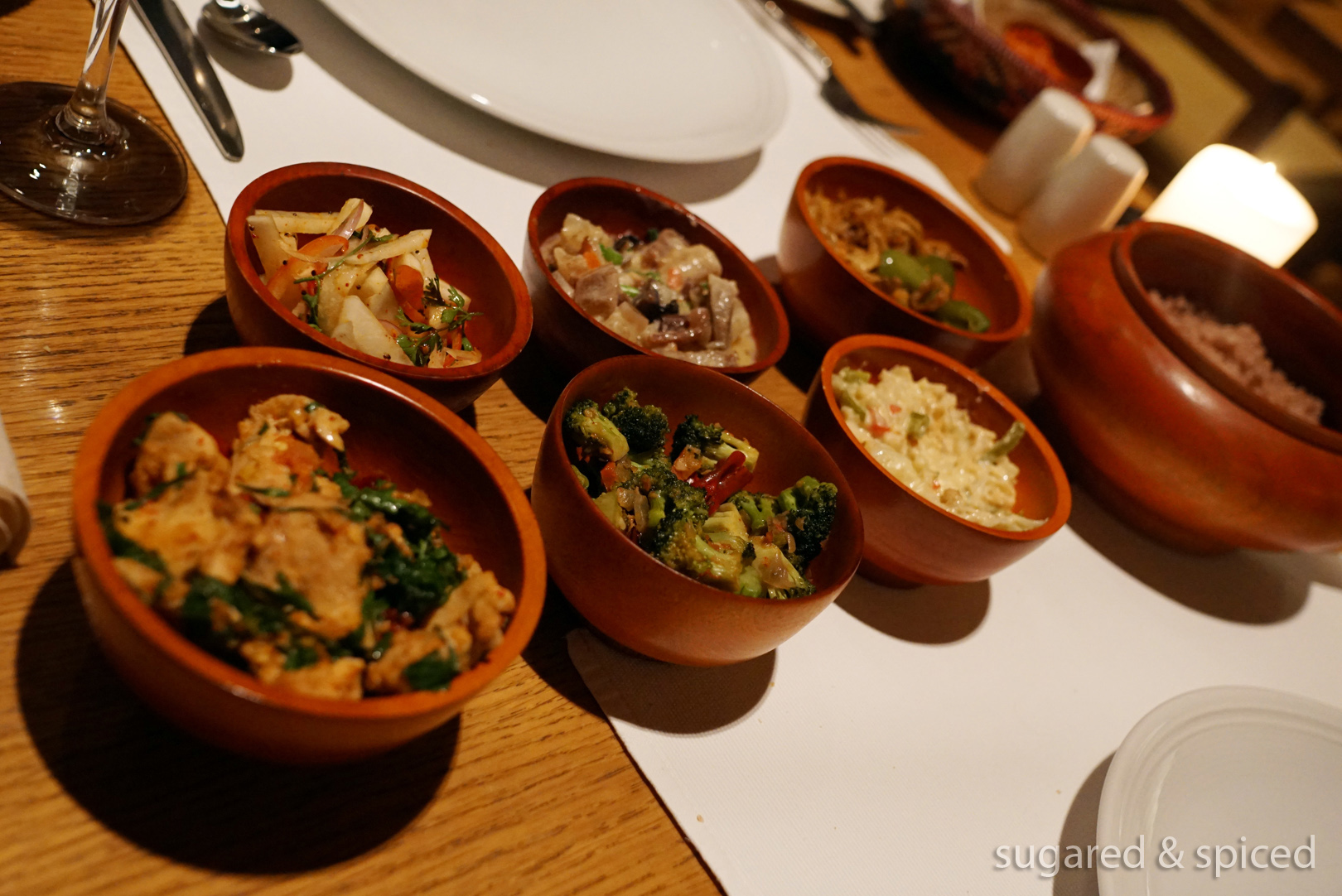
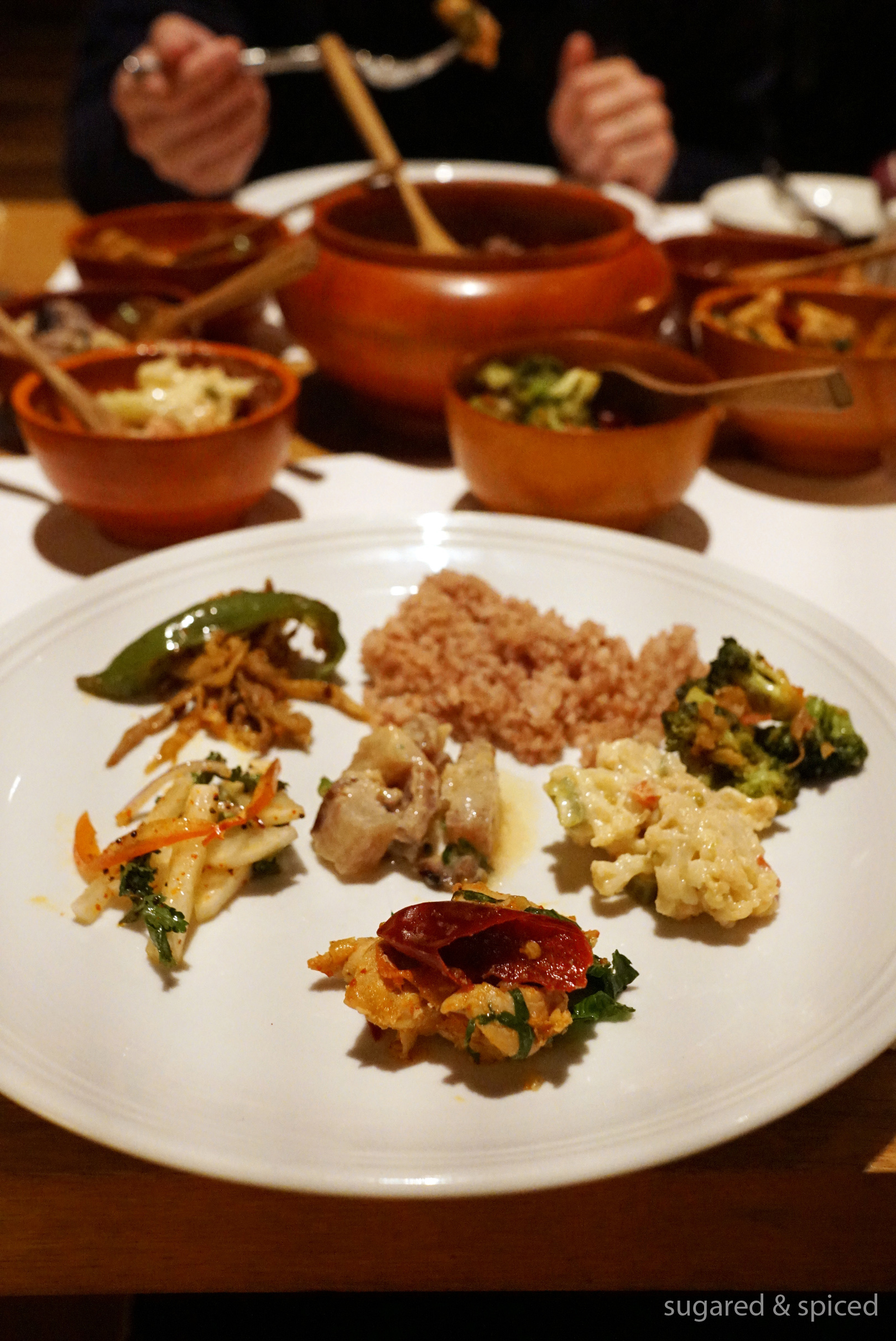
Full from dinner and more than ready to rest of the night, we went back to our suite. To our delight, our bed had already been warmed by two hot water bags.
飯後拖著沈重的肚子及疲憊不堪的身體回房休息,驚喜地發現服務人員用熱水袋為我們暖好了床。
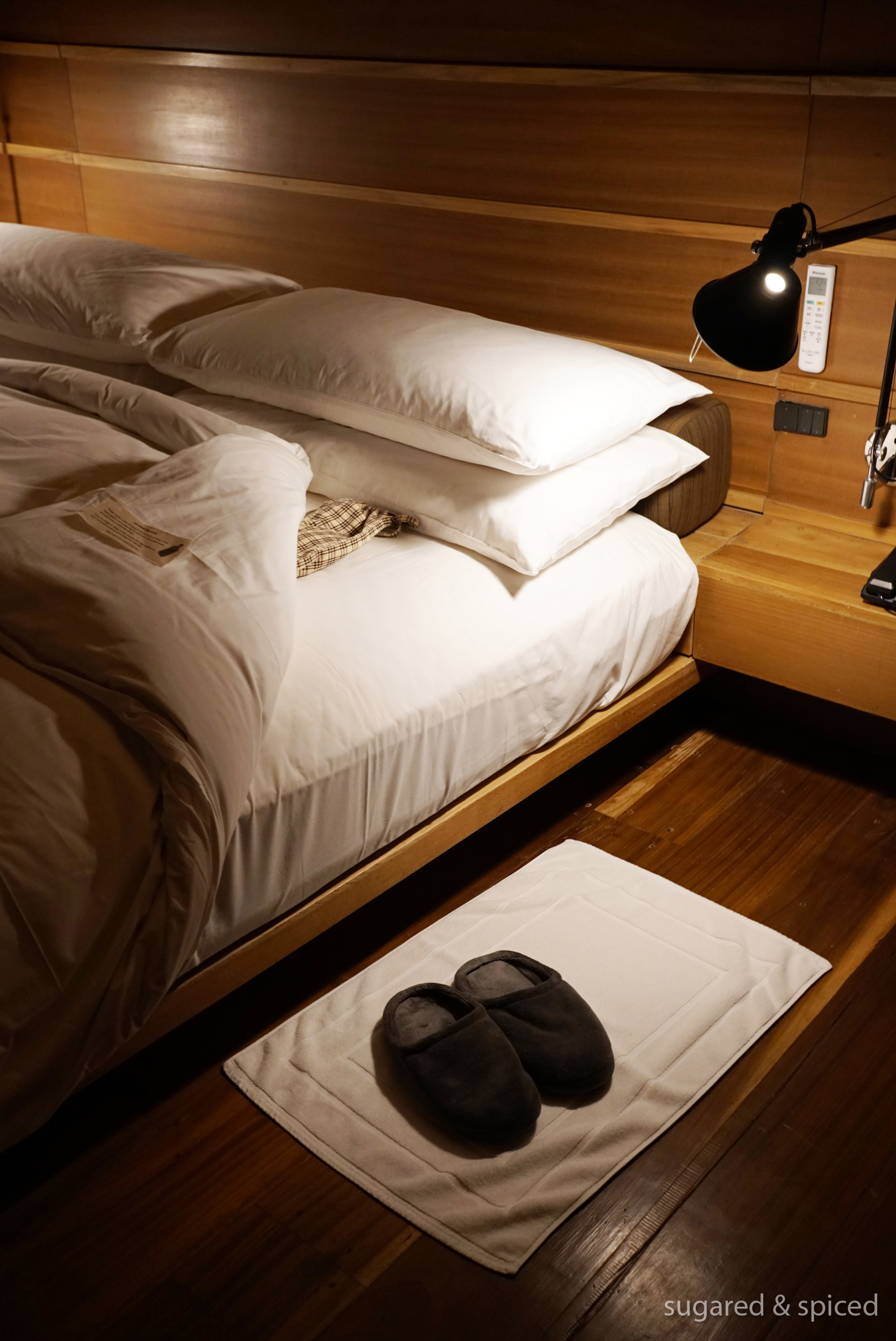
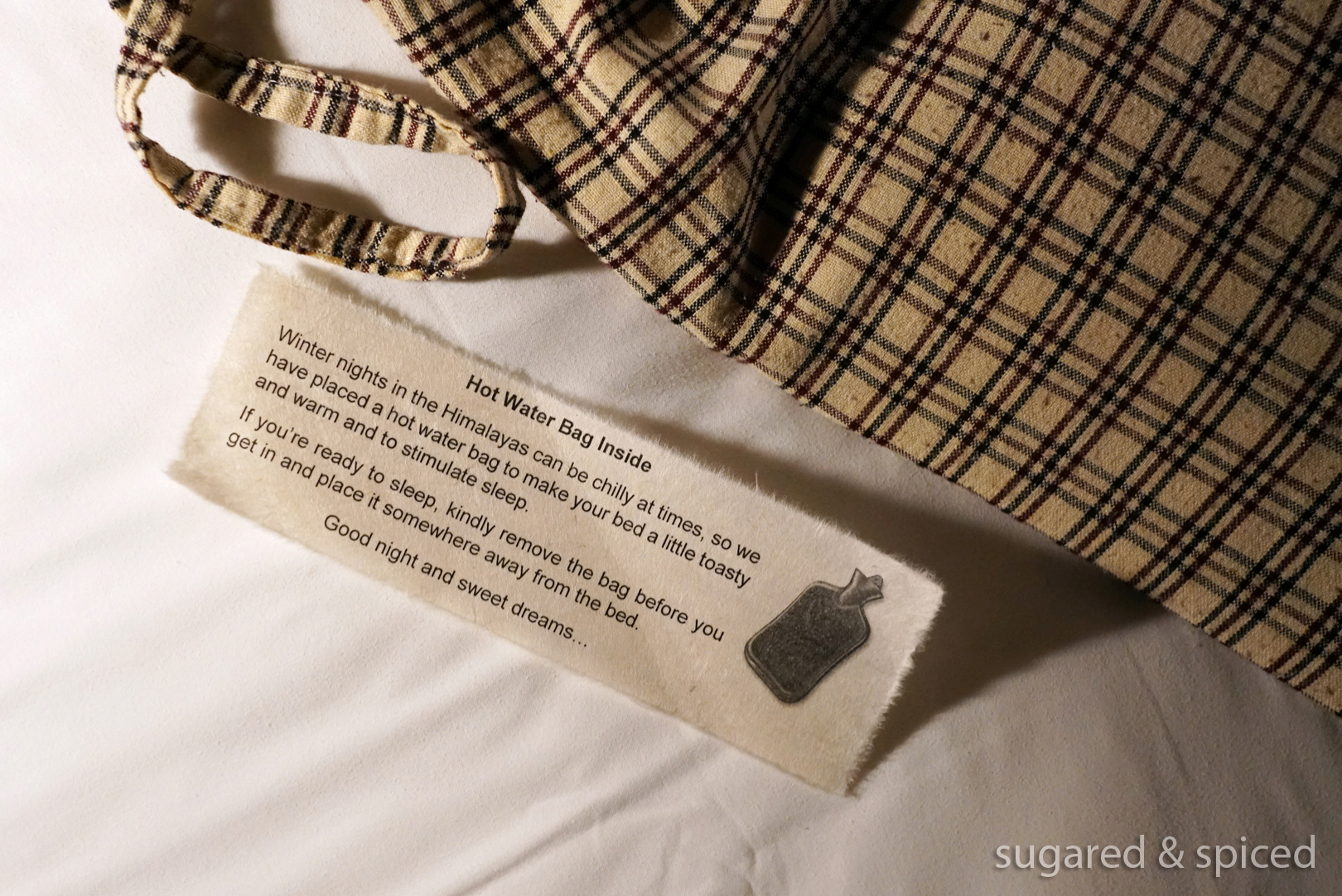
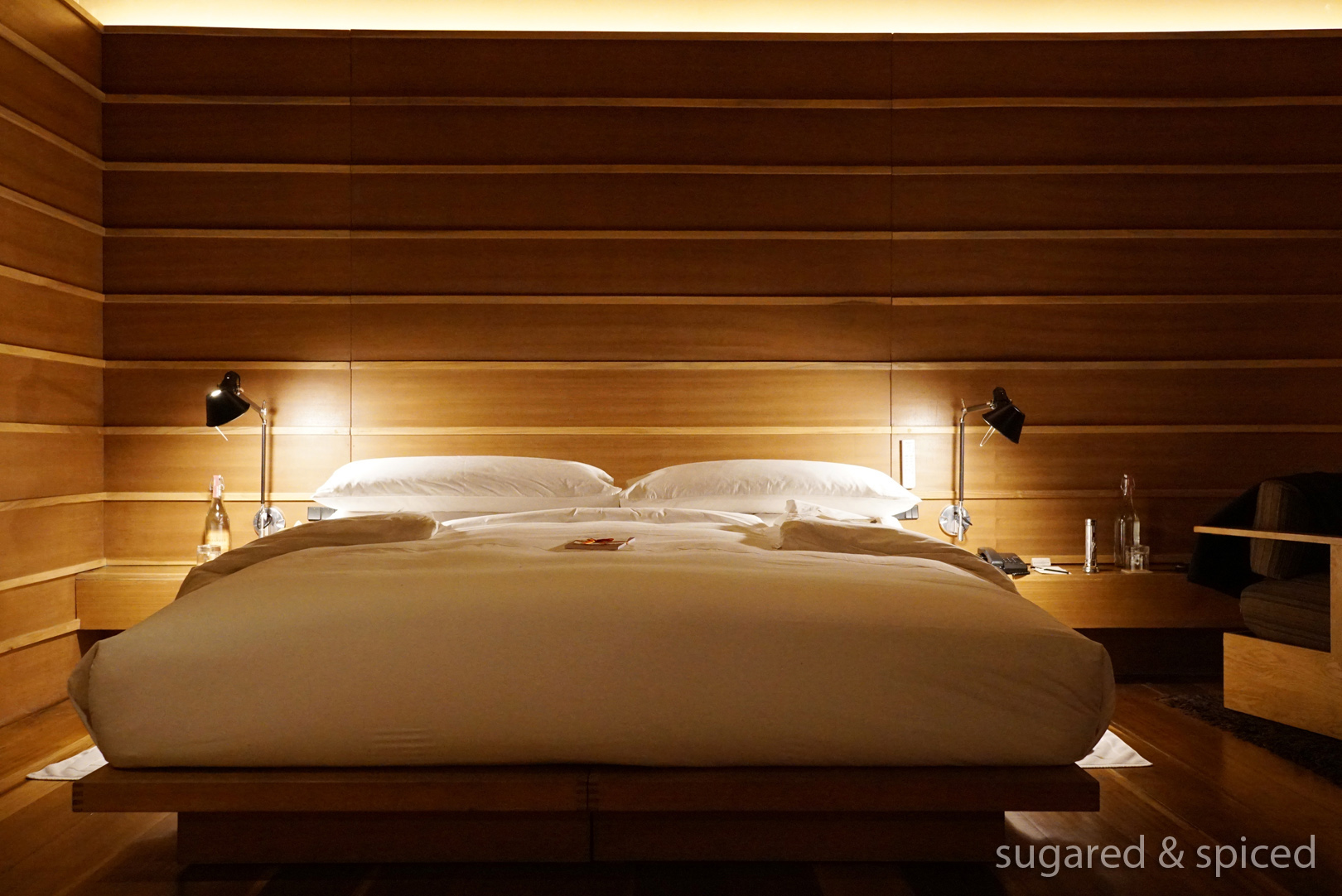
The bath tub had also been partially filled to keep the air moist.
浴缸裡也放了半缸熱水,滋潤房裡的空氣。
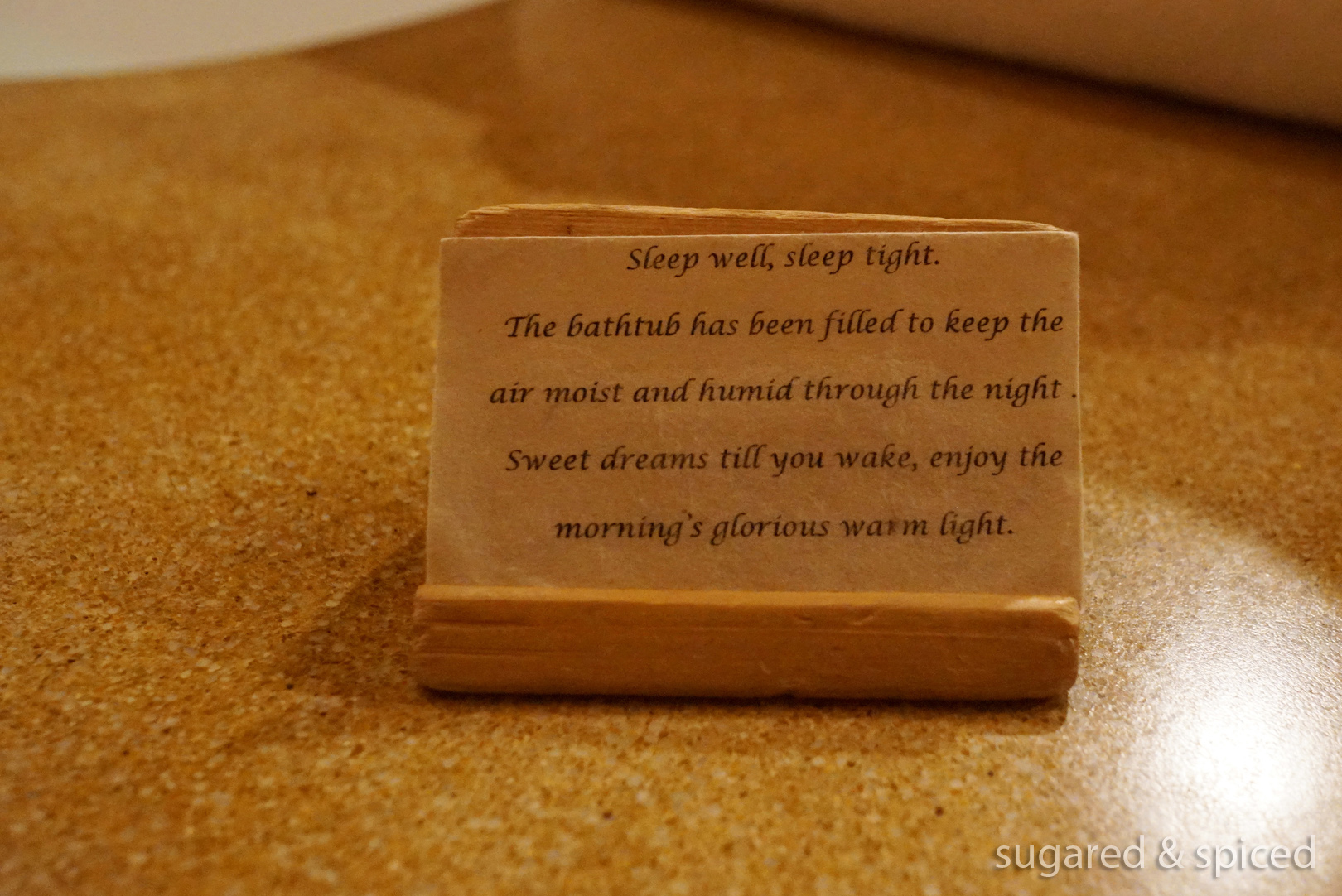
So why not take a hot bath before heading to bed…
既然如此,就先泡個熱水澡再鑽入被窩吧…
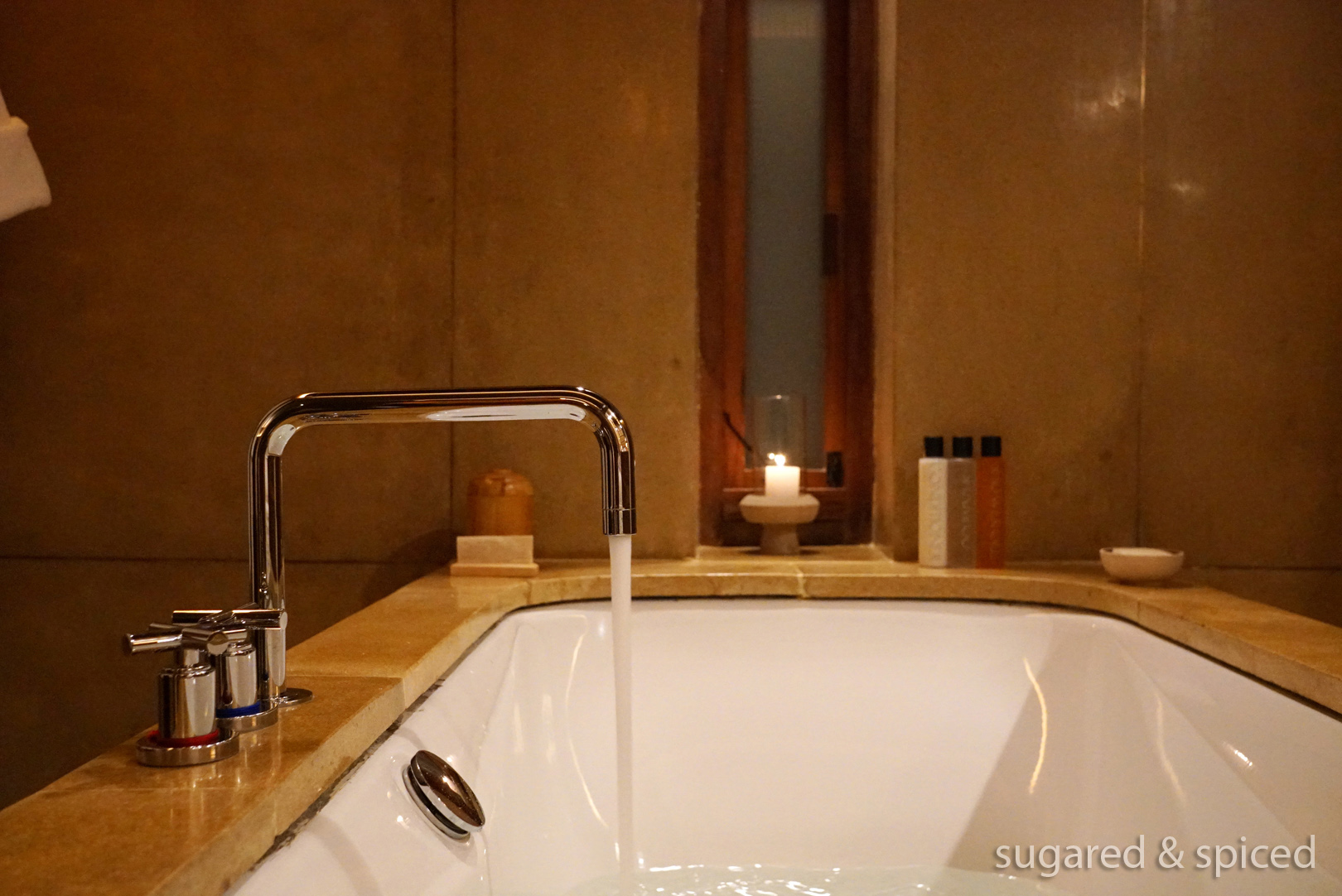
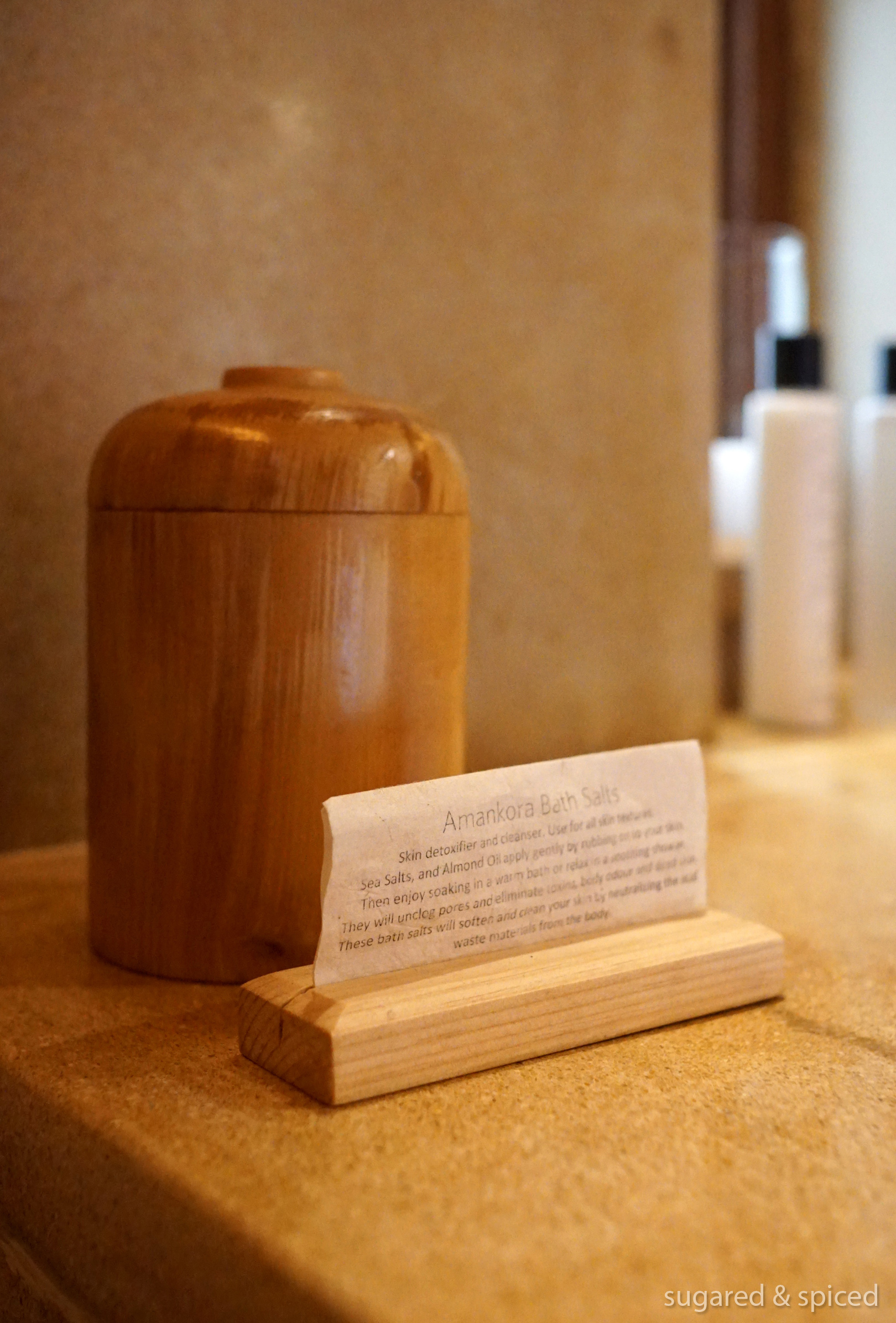
Amankora had also placed a little gift on our bed, a lovely gesture they were to repeat for each day of our journey. The first gift we received was a book called “Dawa: Story of a Stray Dog in Bhutan”, an enchanting story by a local author, perfect for bedtime reading while in Bhutan.
每晚,Amankora 都會在床上留一份有當地特色的小禮物。第一晚的禮物是 “Dawa: Story of a Stray Dog in Bhutan”,一本關於不丹流浪犬的故事書。這是一本淺顯易懂,但會帶來感動的小書,在不丹每晚都翻幾頁,然後安然入睡…
To be continued…未完,待續。
Note: If you would like to see some videos from the trip, please visit my instagram account “sugarednspiced” for Bhutan story highlights.
注:歡迎來 Instagram 帳號 “sugarednspiced” 看看我的不丹精選限時動態
